Derry/Londonderry – Belfast Lanyon Place – Dublin Connolly – Carrick-on-Shannon
I usually enjoy a Premier Inn breakfast (their veggie sausage and poached egg to order is a particular favourite of mine.) Unfortunately, this being the Brewer’s Fayre (see yesterday’s post) it was a bit of a letdown. No cook to order, no fruit salad on the buffet, only fried eggs on the hot buffet. Bah!
Having not looked at the city when I arrived last night, I needed a bit of a plan for today. I’d established that I could leave baggage at the visitor centre in the city centre, which fortunately was open, this being Bank Holiday Monday. I booked a taxi down to town, timed to arrive as it opened. Not something I would ever normally do (I have an aversion to taxis, especially on journeys that are walkable) but I wanted to make best use of every minute I had here.
Bags dropped I set off around the city walls. The walls here are complete – though with lots of up and down. They surround the city as it was in the 17th Century, which is much smaller than it is today, so leads to the visually odd situation that more recent buildings adjoin the walls on the outside, often right up to them.
I’d arbitrarily decided that I would walk anti-clockwise, starting at the corner closest to the visitor centre. That took me uphill with the old town to my left and new developments to my right. As I climbed higher the view opened out, and I found myself looking towards the Bogside district.
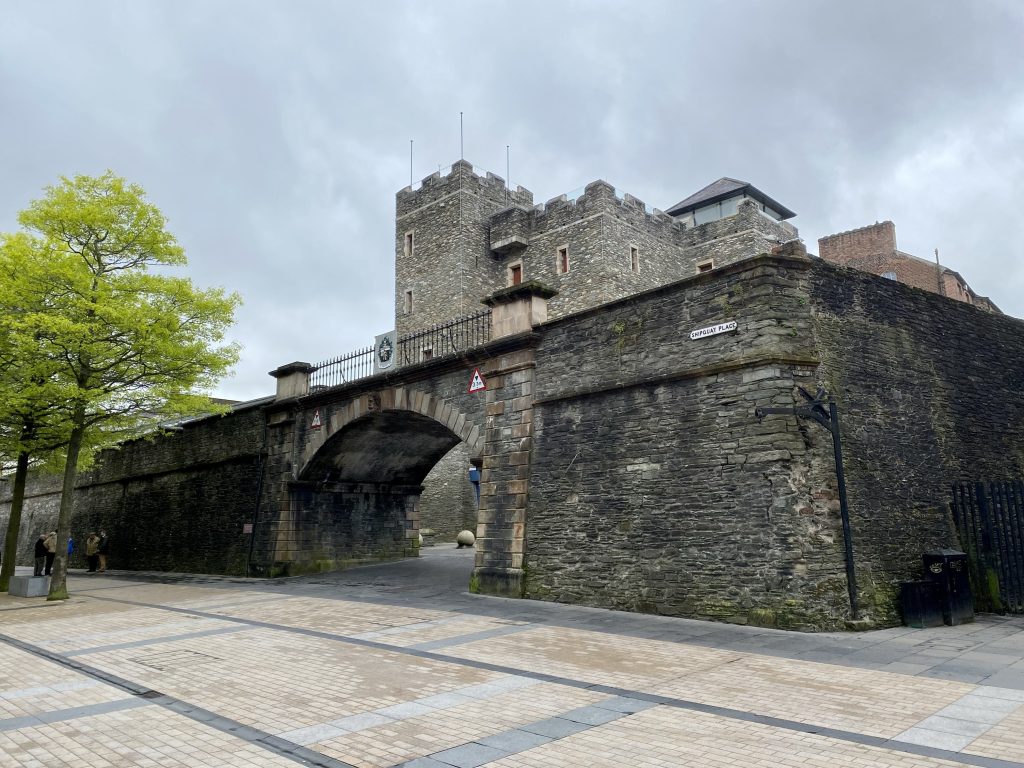
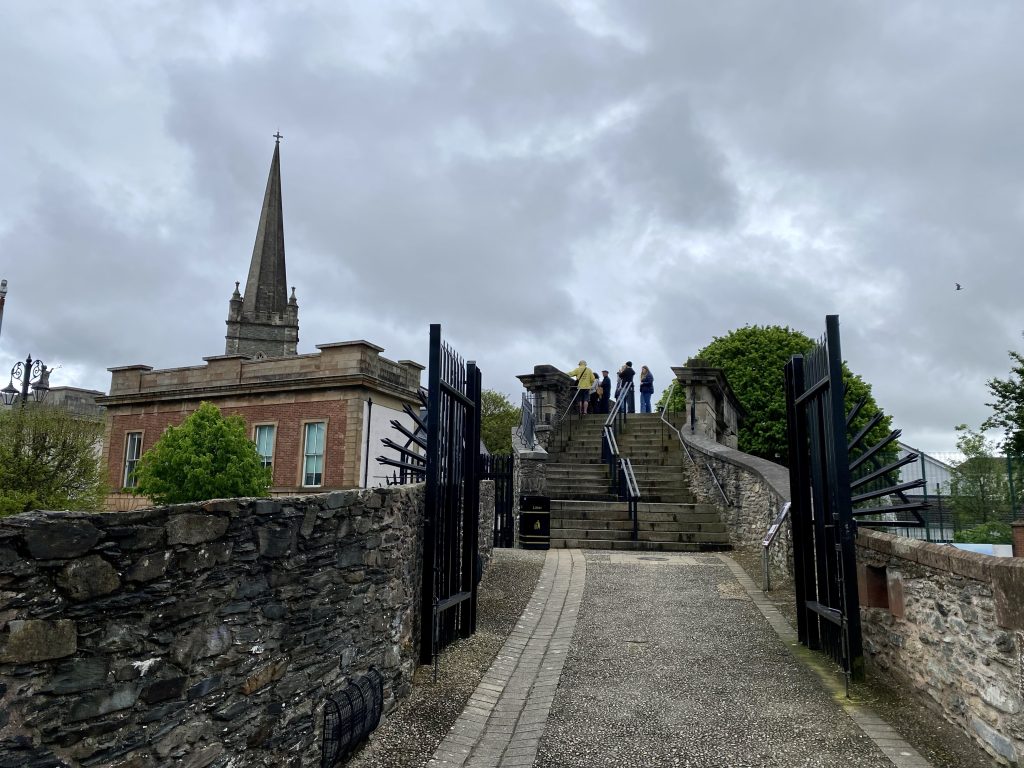
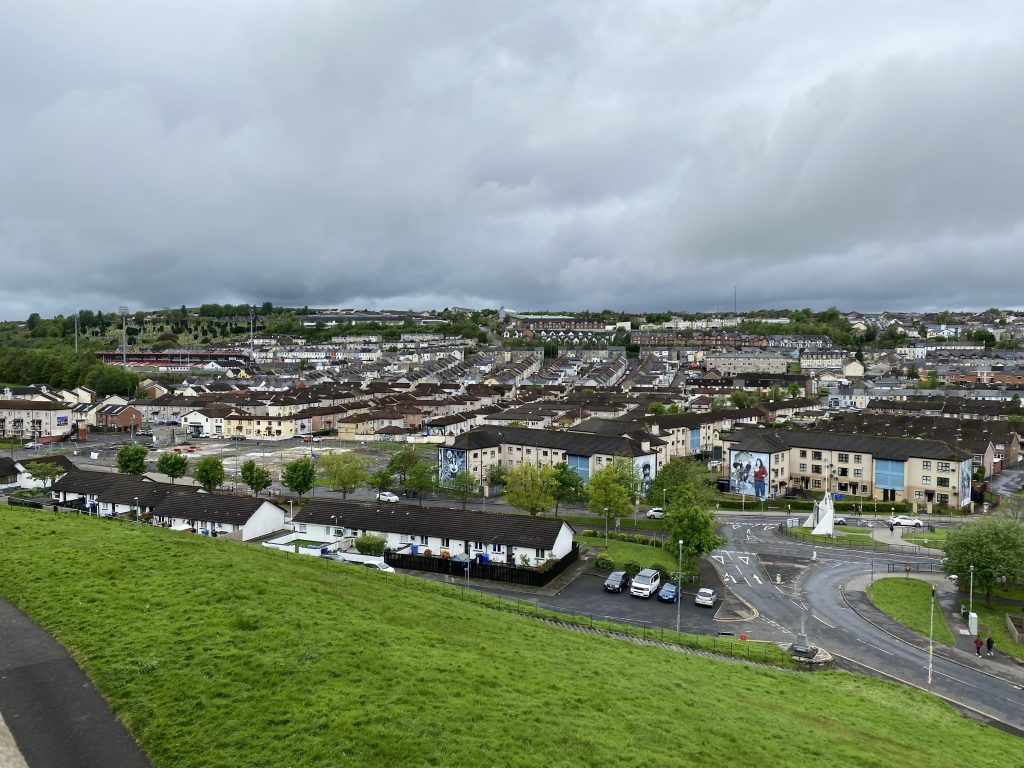
I passed the Apprentice Boys Memorial Hall. Here there is a high fence on the outside of the wall, and it is an area where the land has been cleared and grassed. One thing I admire about this city is it’s not afraid to tell it’s difficult stories. There are boards all over the place and I learned a lot from them, not least in this area.
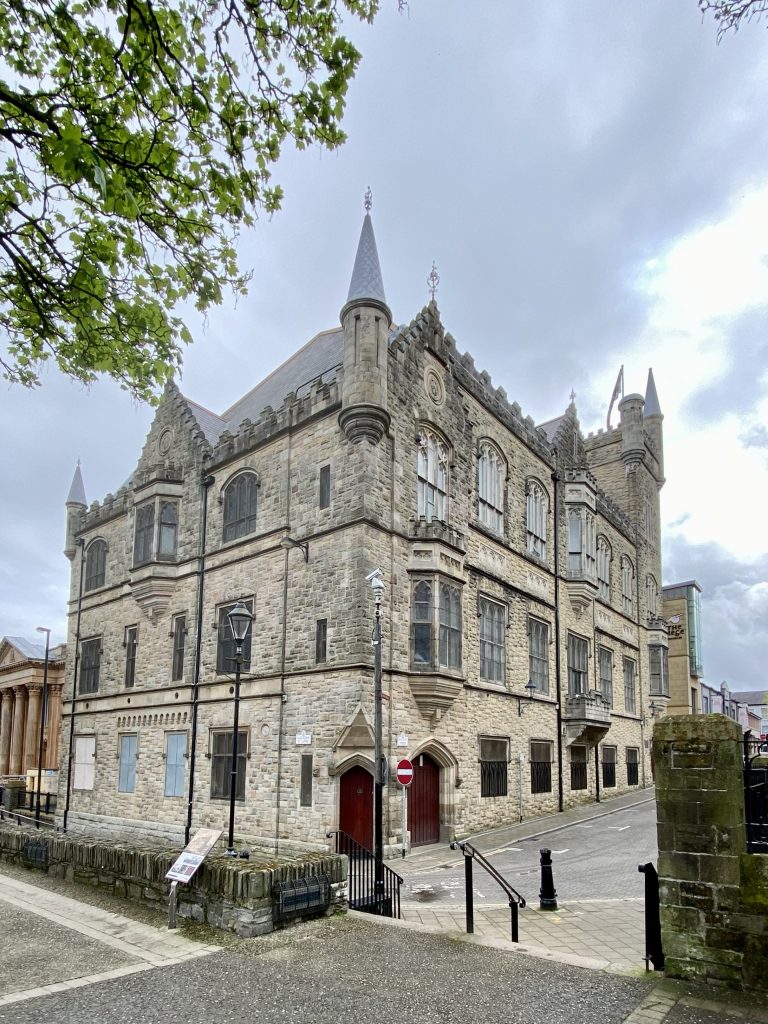
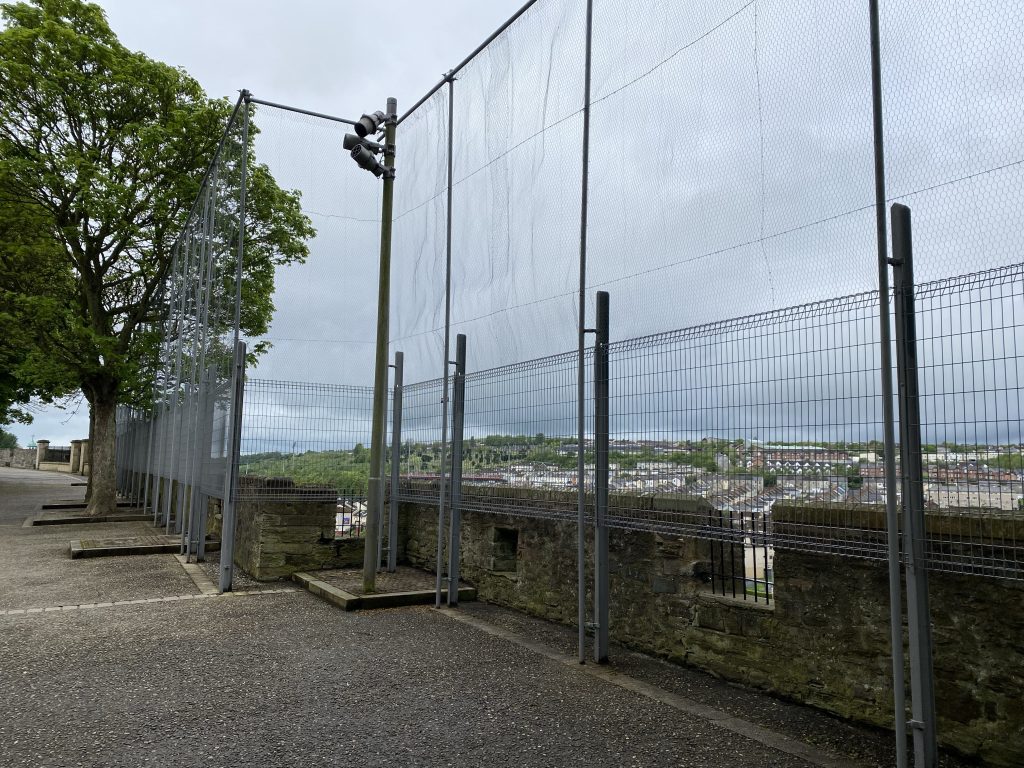
At Bishop’s Gate, I left the walls and slightly retraced my steps
along the outside of the wall down to the area now known as Free Derry Corner. It was still relatively early in the morning but there were several tour groups around as well as people like me, walking on their own. At one point I stood next to a group of French students who were were having Bloody Sunday explained to them in a mix of English and French. Another guide was telling his group that the street we were standing on was the most rioted street in Europe.
The preserved gable end wall with the “You are now entering Free Derry” sign is of of course the focal point of this area, but elsewhere I looked at memorials to those who had been lost in one or other of the terrible series of events we have come to know as “The Troubles.” The wall is repainted from time to time, using a variety of colours and styles but is where the original message was painted.
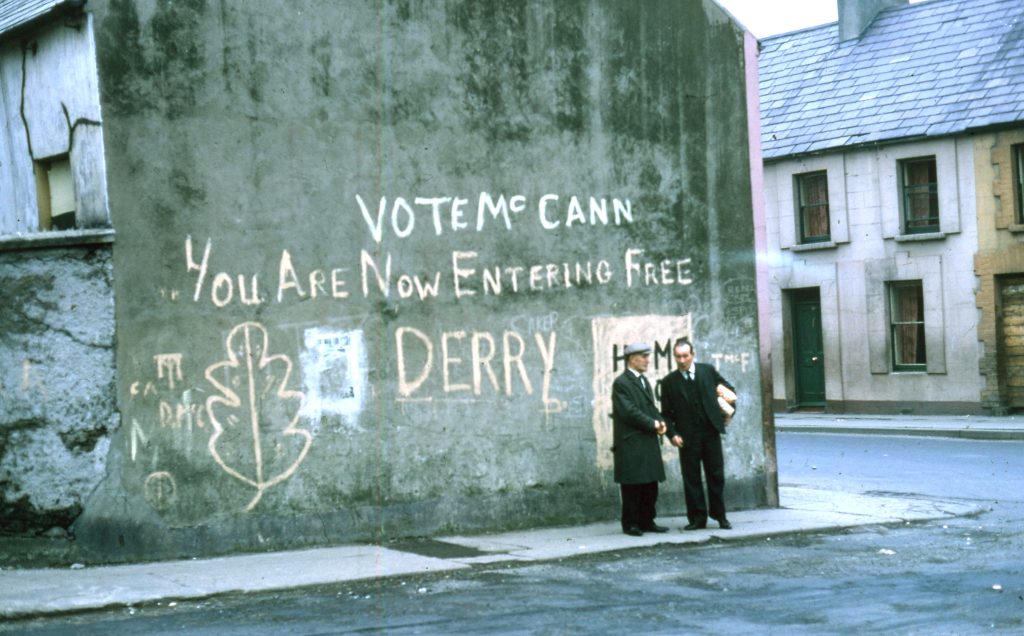
I have friends from both traditions, indeed with connections to both sides of the armed conflict and for all I have my own view on both the present situation and historic events, I’m not sure here is the place for that debate. However I will say that this visit was incredibly difficult viewing, deeply moving and I’m really glad that I did it. When I get a chance, I’ll go back, and spend time at the museum.
Some of the following set of photos includes detail of murals and memorials in this area, representing organisations and events that some people that I know are reading this diary may not wish to view, which is why I have presented them in a different way. The gallery will open if you click/tap the image below, or you can use the arrows to view the images at a smaller size.
Returning to the walls I discovered that as well as its historic function, the gate forms part of a barrier that is still used daily. There is a side entrance which is locked each evening, as it is part of the boundary between nationalist and loyalist areas. It is also the site of a former prison, of which only one tower remains. This is now a museum, but it was not open when I was there. I realised that Bishop’s Gate itself has barriers on both sides, which can be locked as needed.
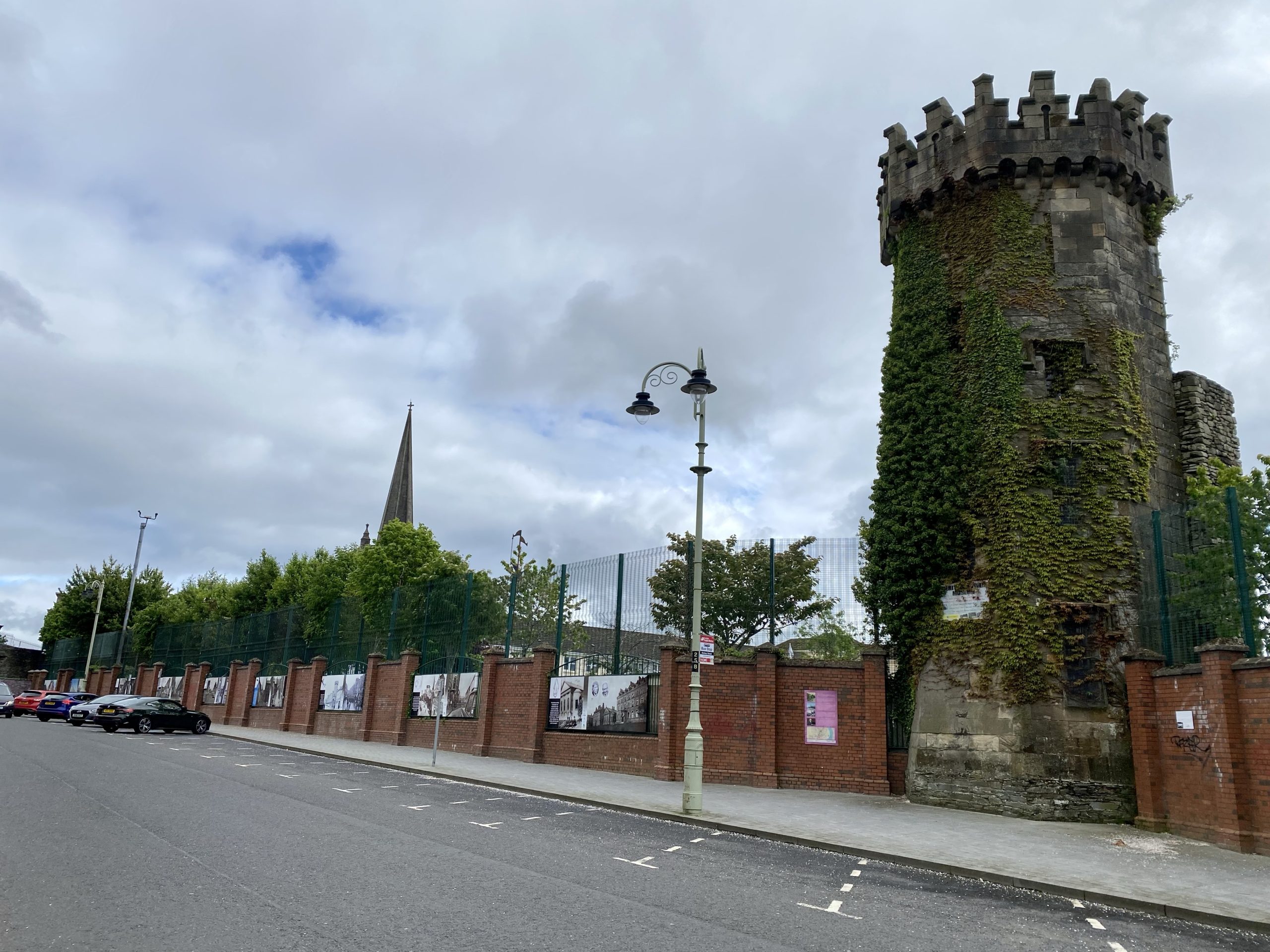
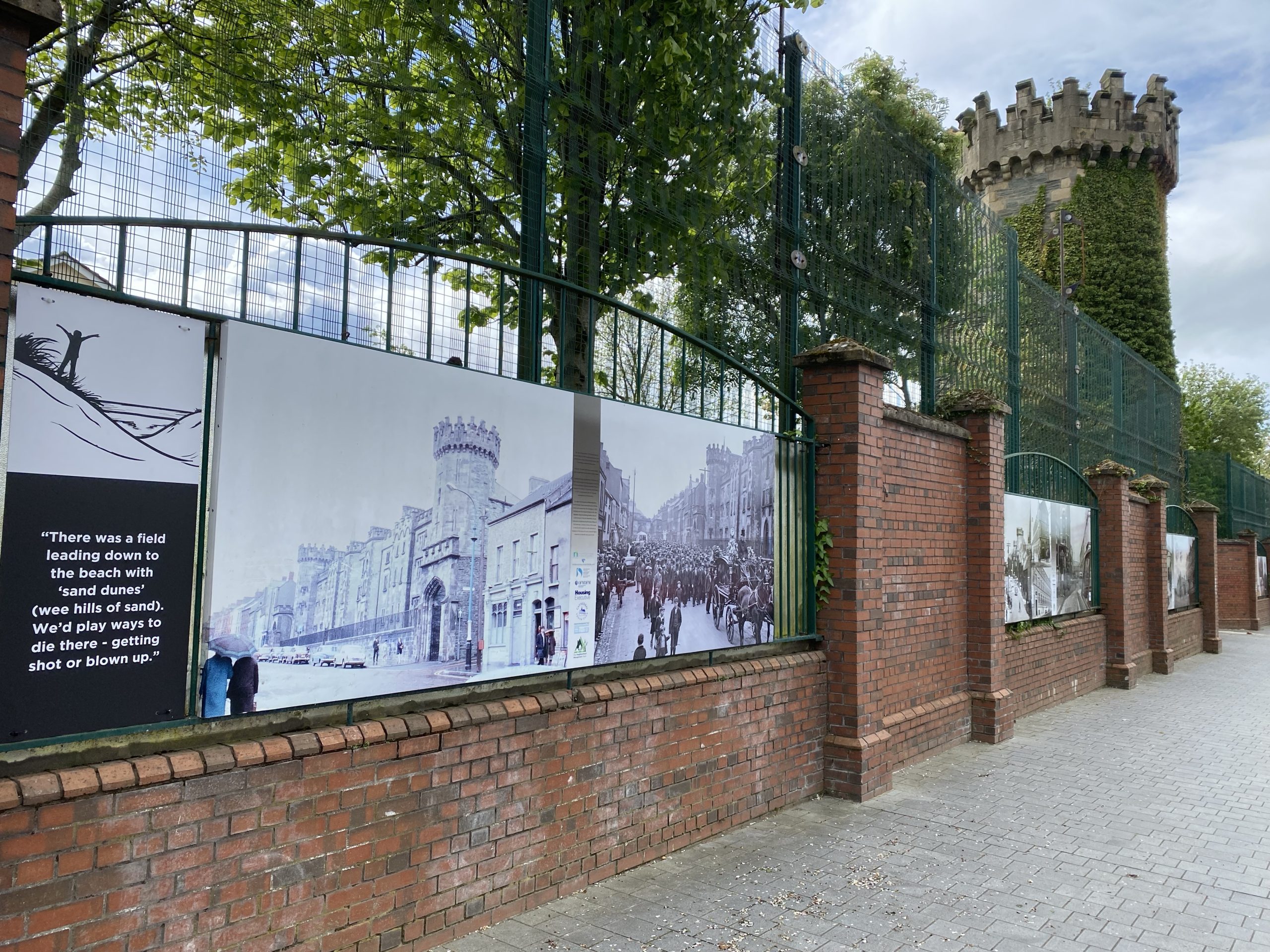
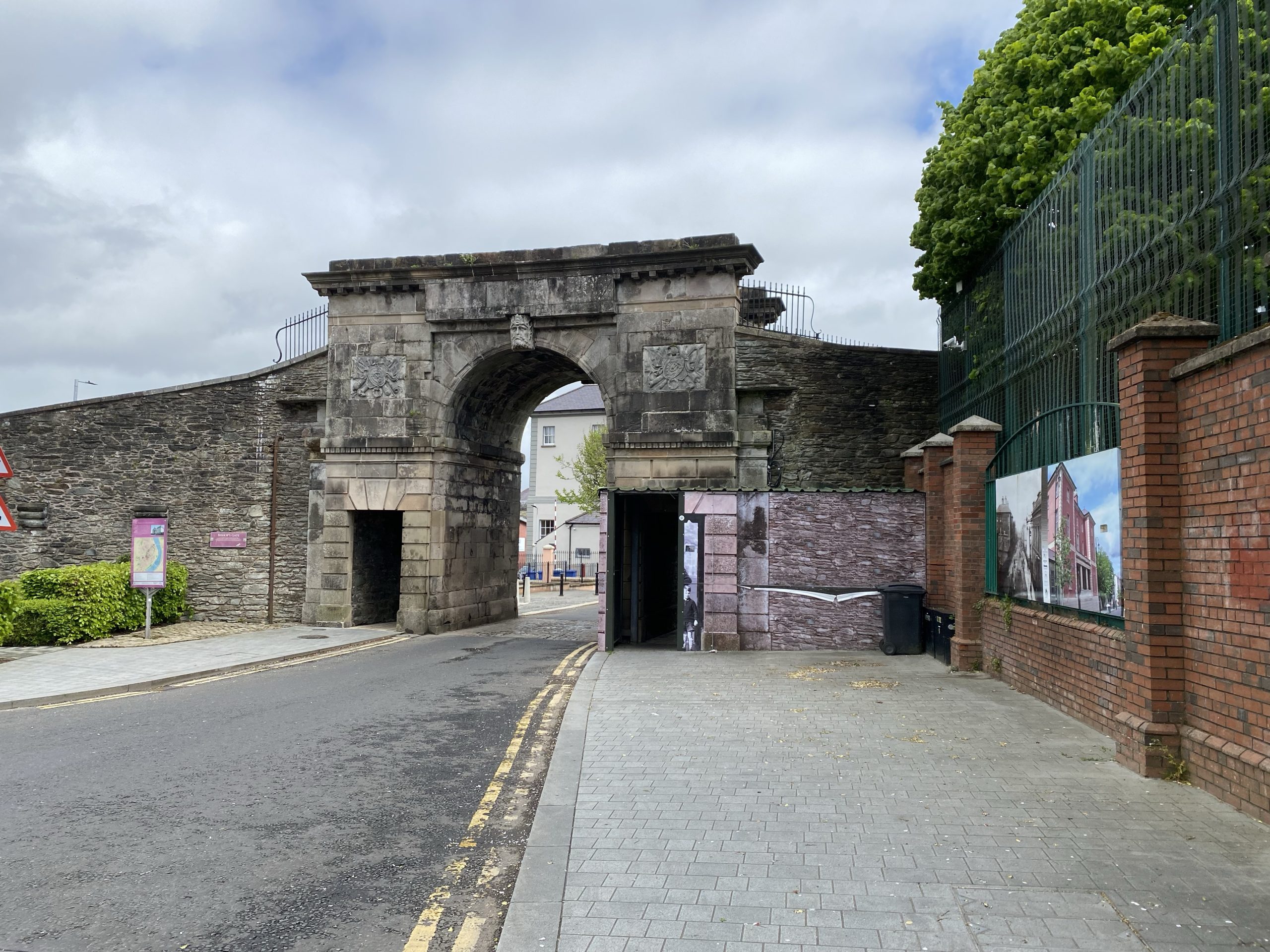
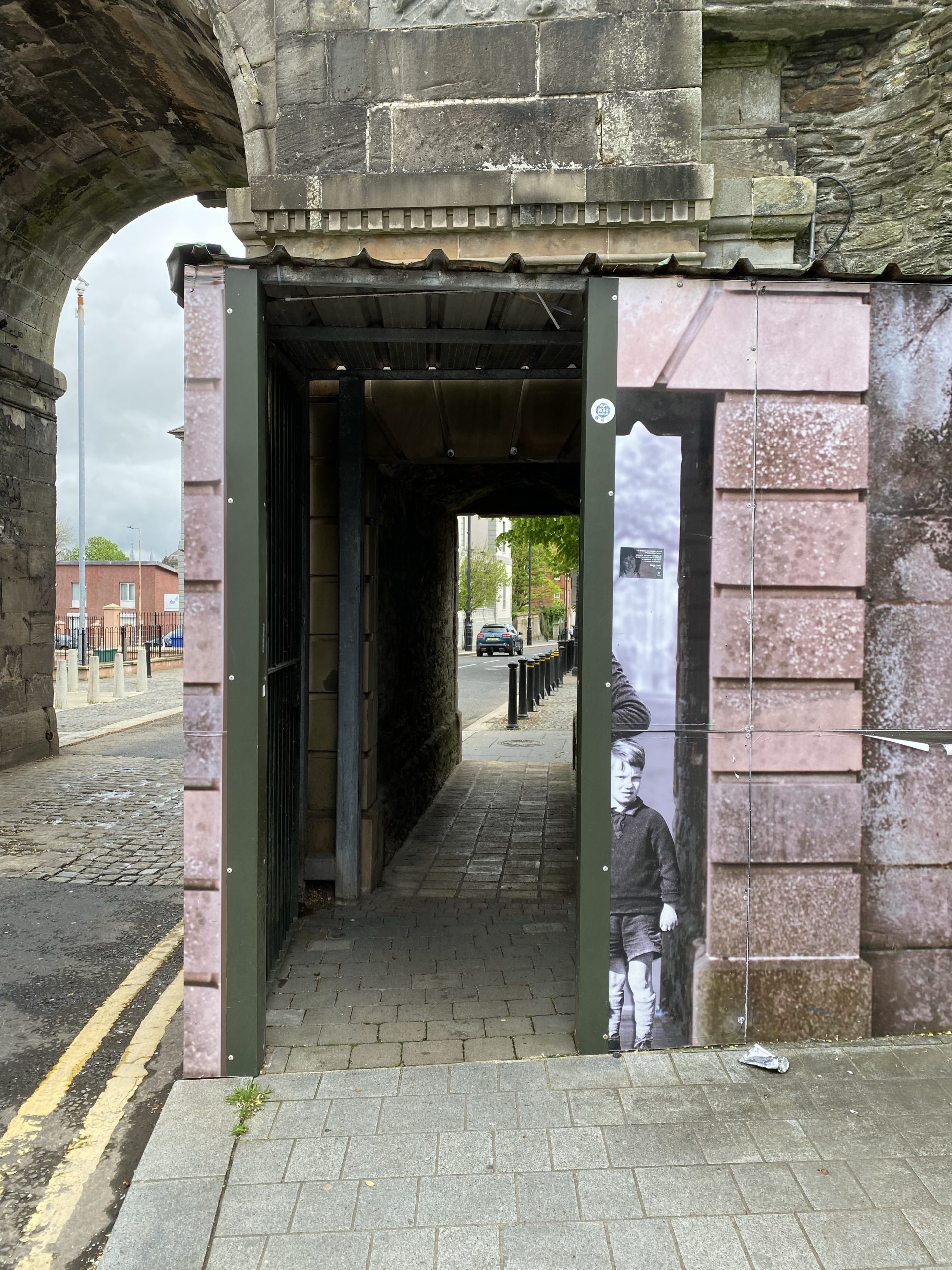
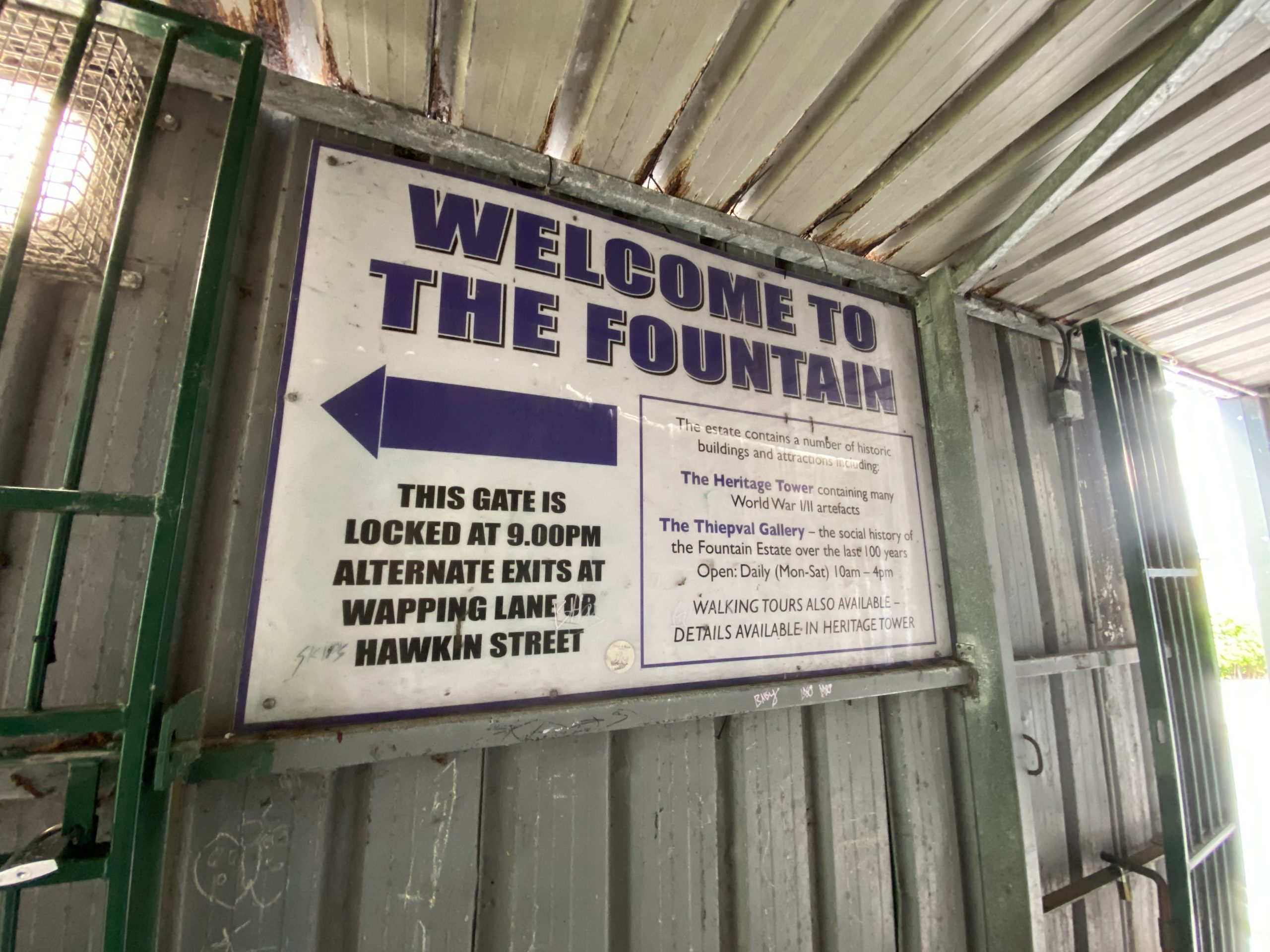
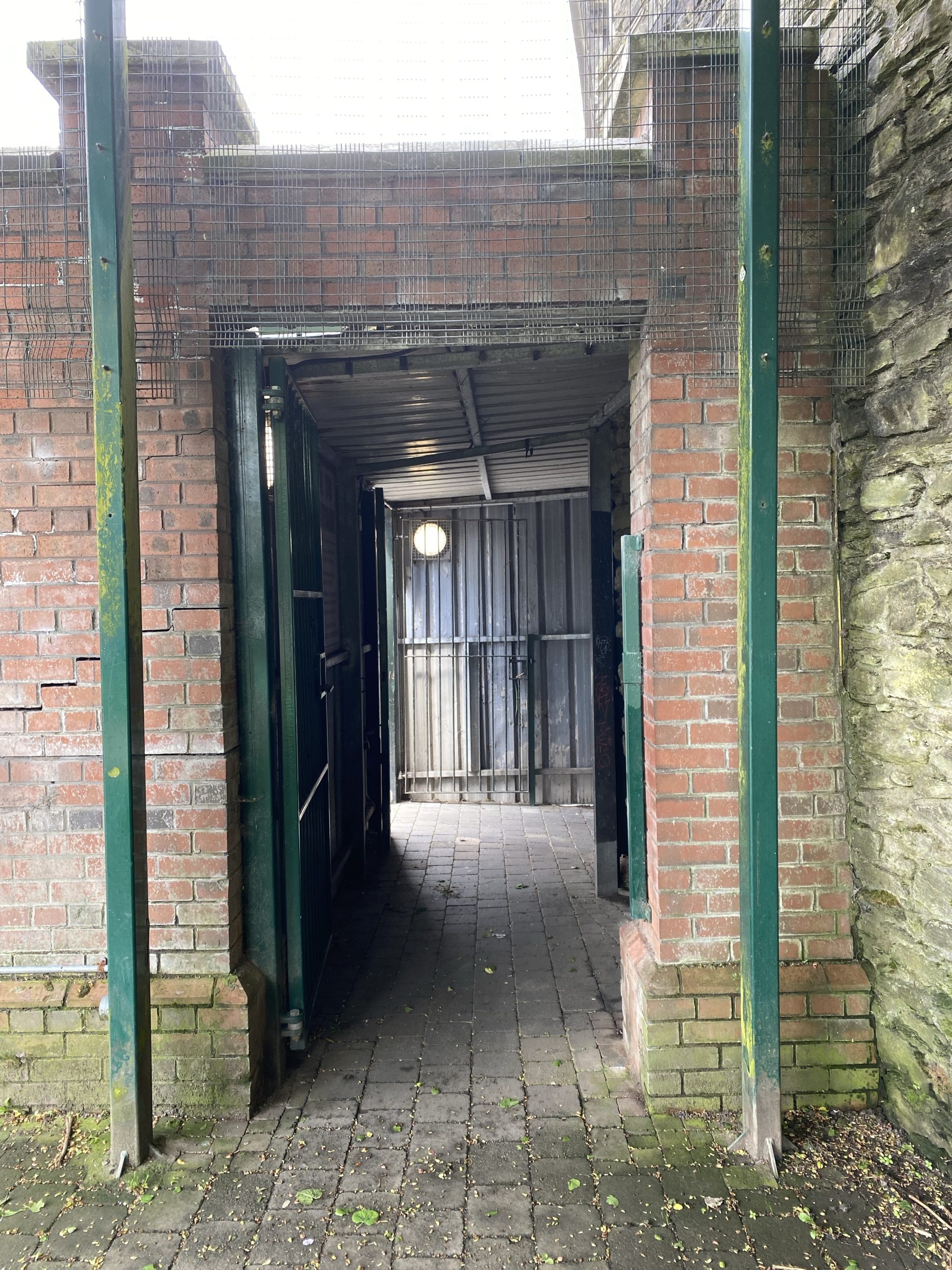

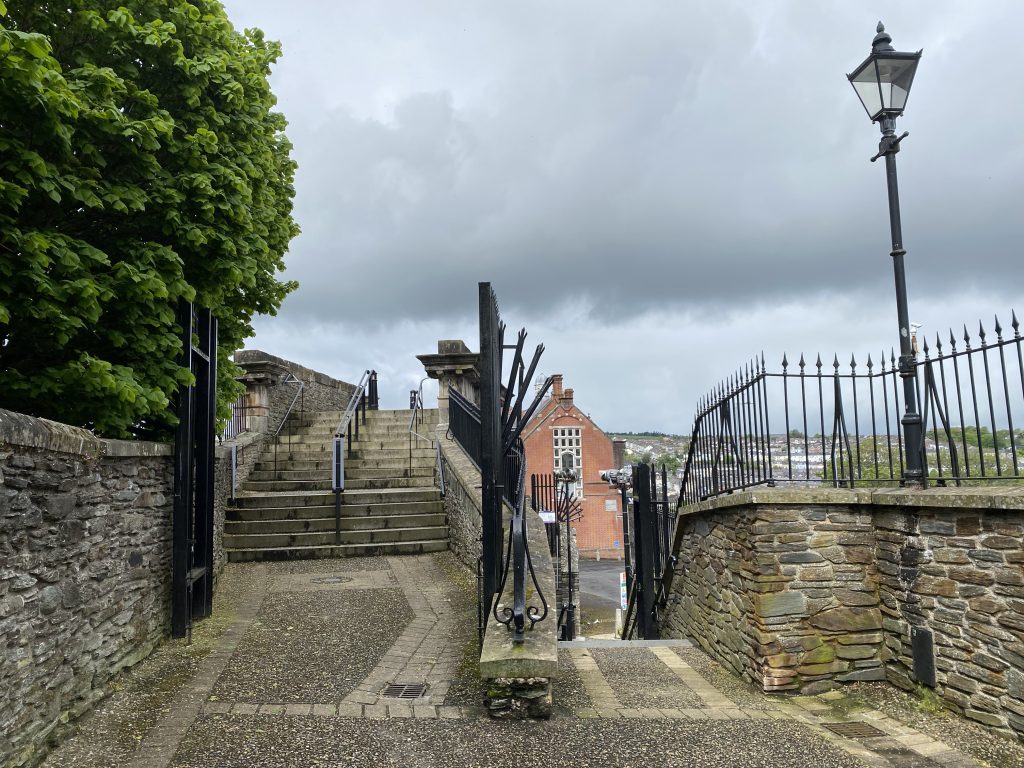
Having turned the third corner I was heading downhill again. This section of the wall overlooks strongly loyalist areas, as can be seen from the flags and graffiti, and painted kerbstones, similar to those I’d seen last night.
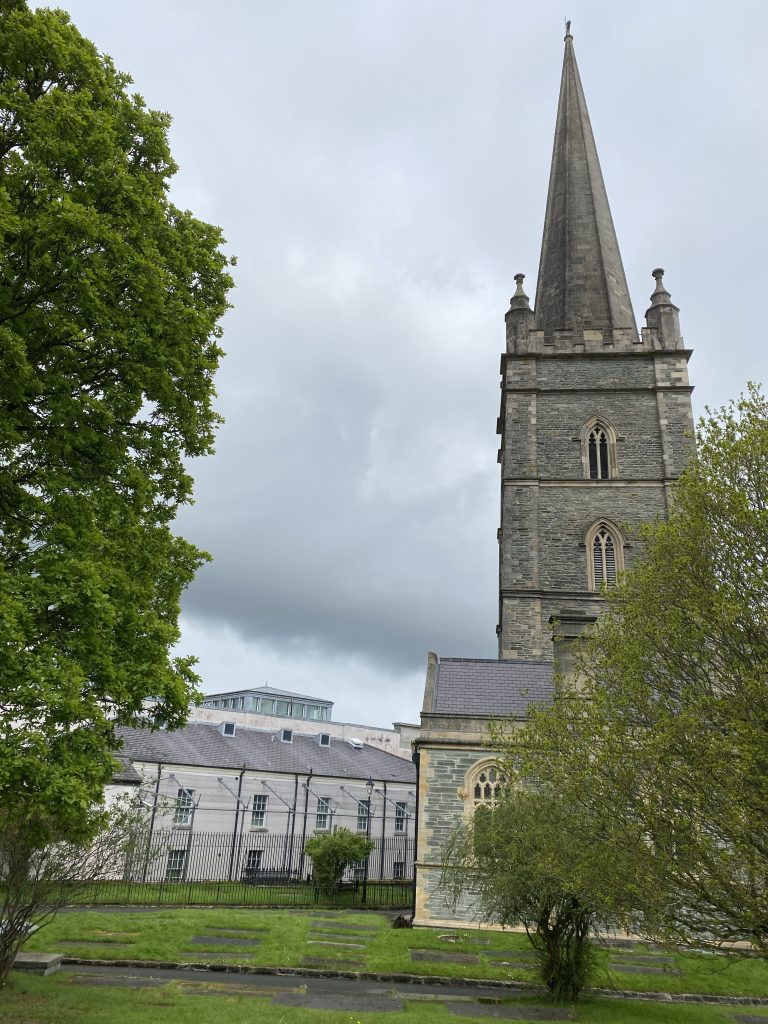
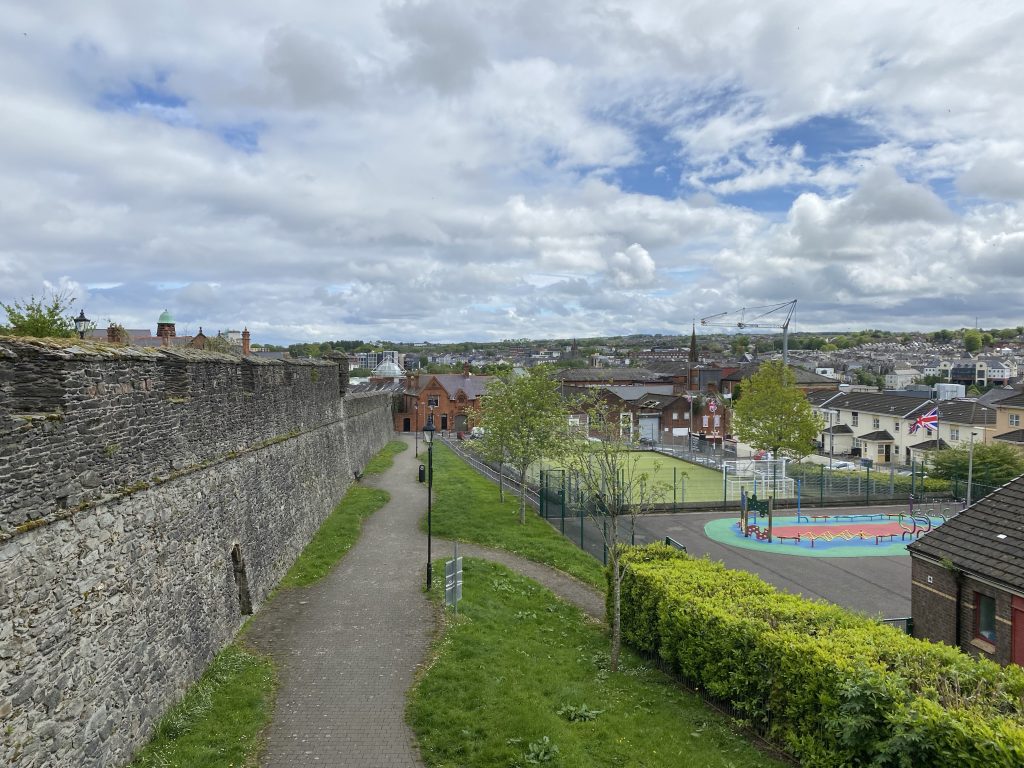
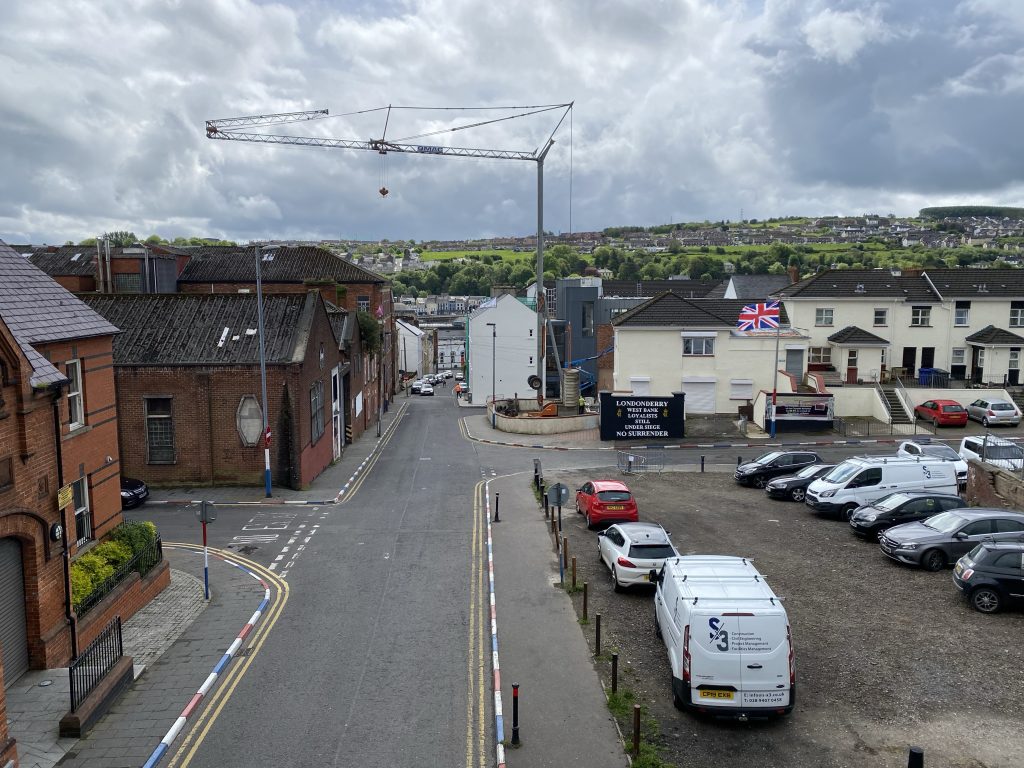
I completed the circuit of the walls, taking me me back to where I had started, via a few more gates. as everywhere there were buildings close to the walls on both sides. There were views of the Peace Bridge, as well as a really good view up Shipquay Street to the historic centre of the city.
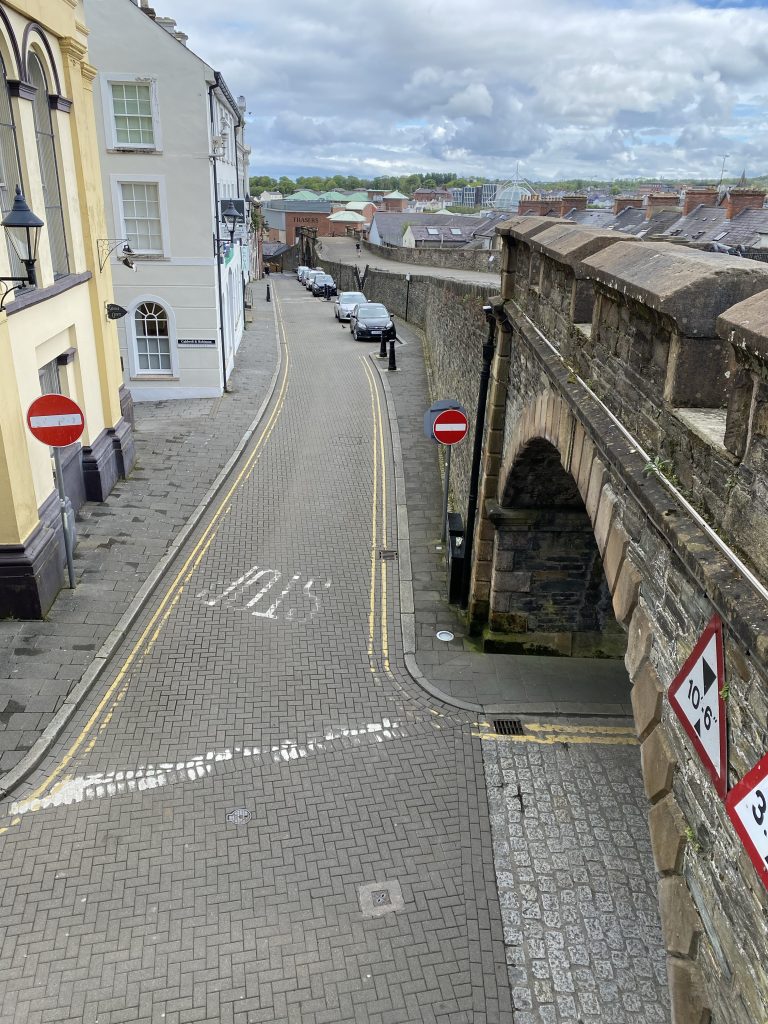
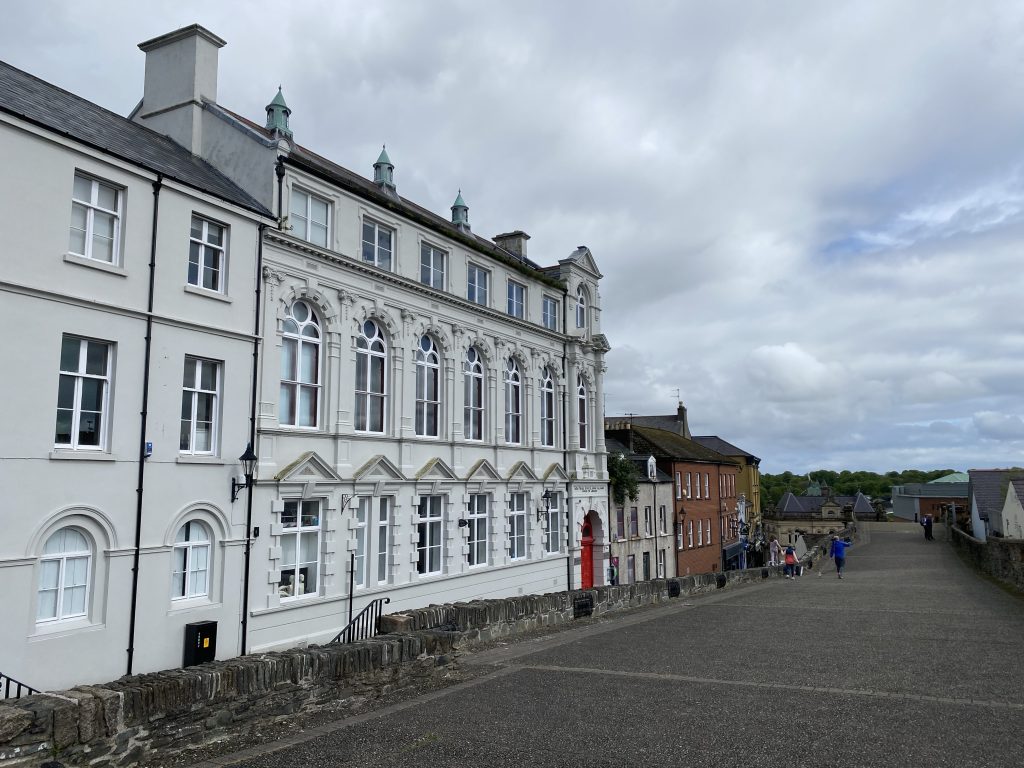
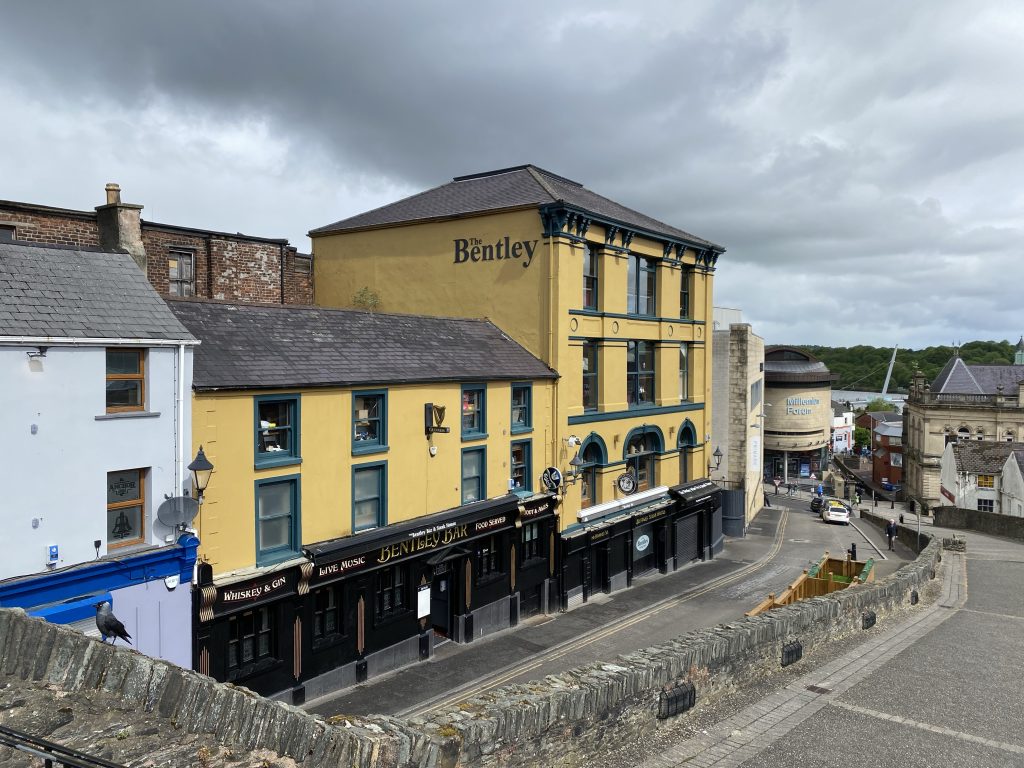
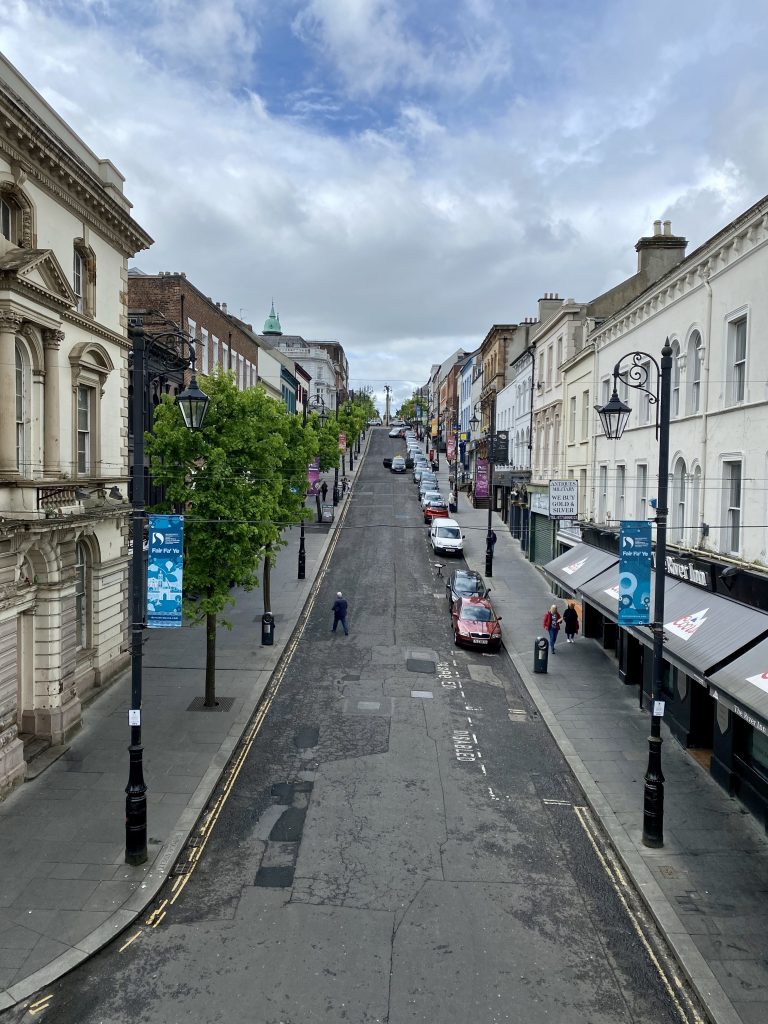
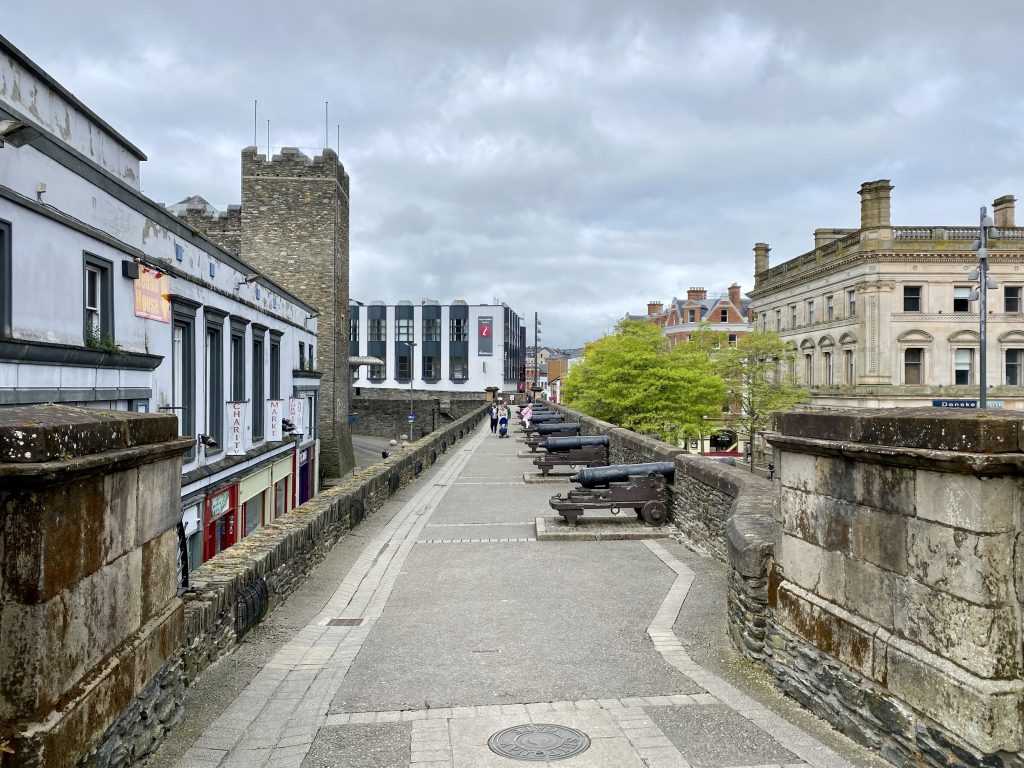
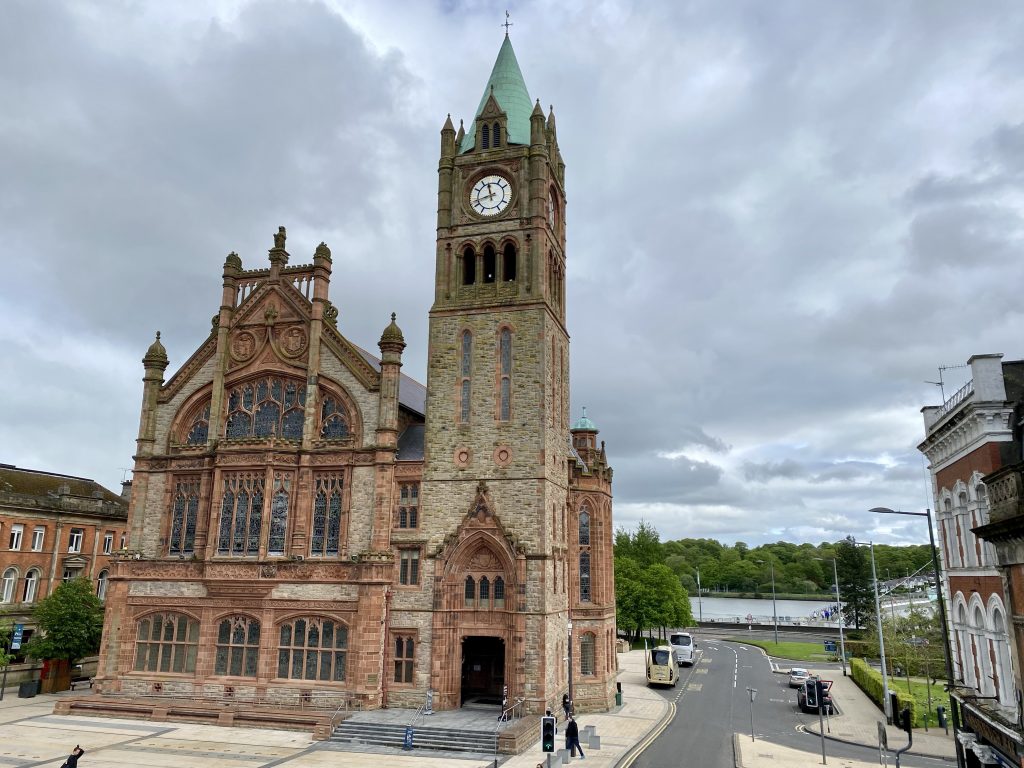
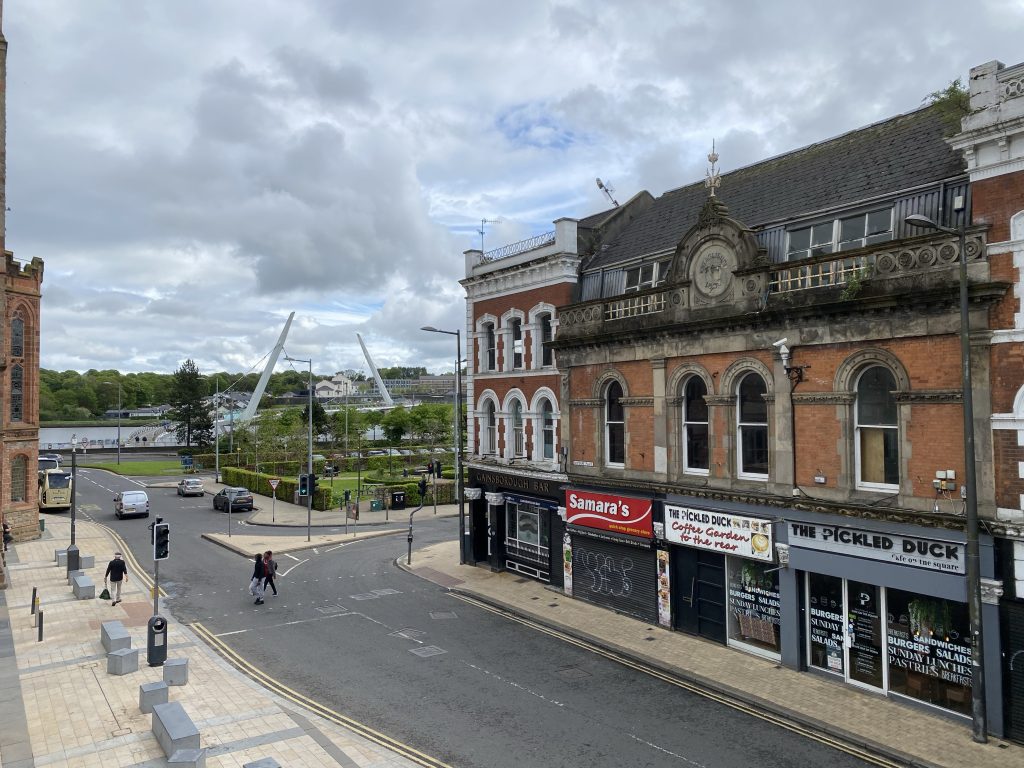
Having completed the circuit, there was just time to see the centre. I entered through a craft market area, though in reality it was more cafes than anything else.
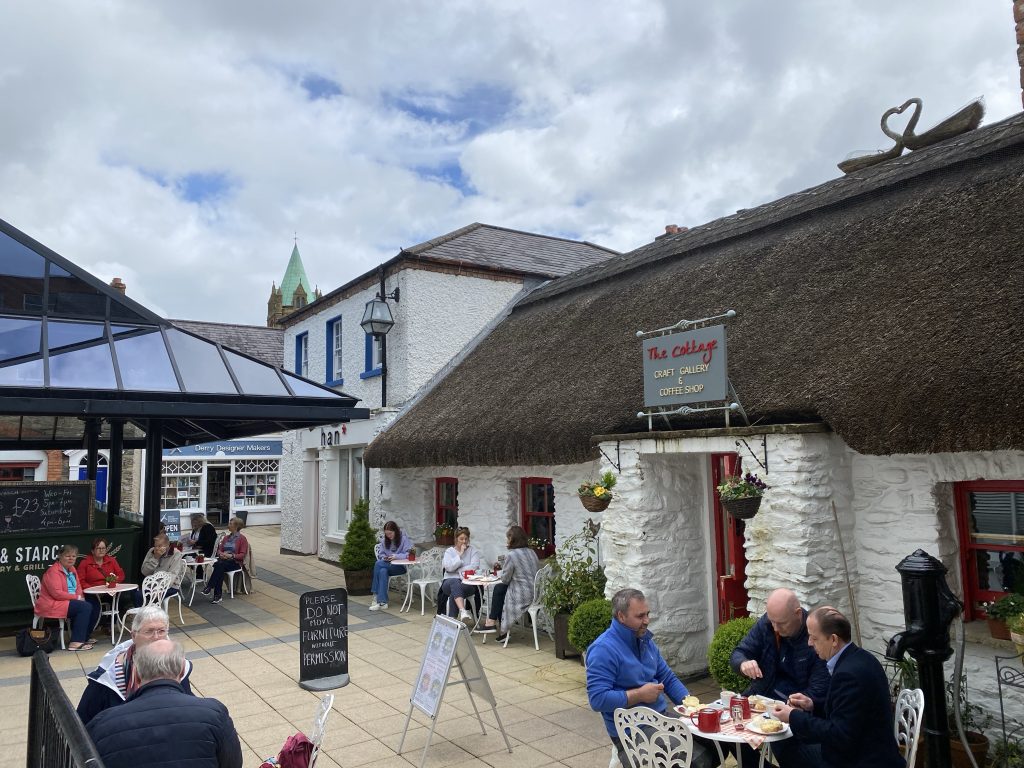
The very centre of the city is a square, besides which is the sad sight of a former department store, clearly once the most impressive and opulent of places. i was told later in the visitor centre that there is a plan to turn it into a luxury hotel. Apparently the interior is still in a good state. That would be worth seeing when it is done.
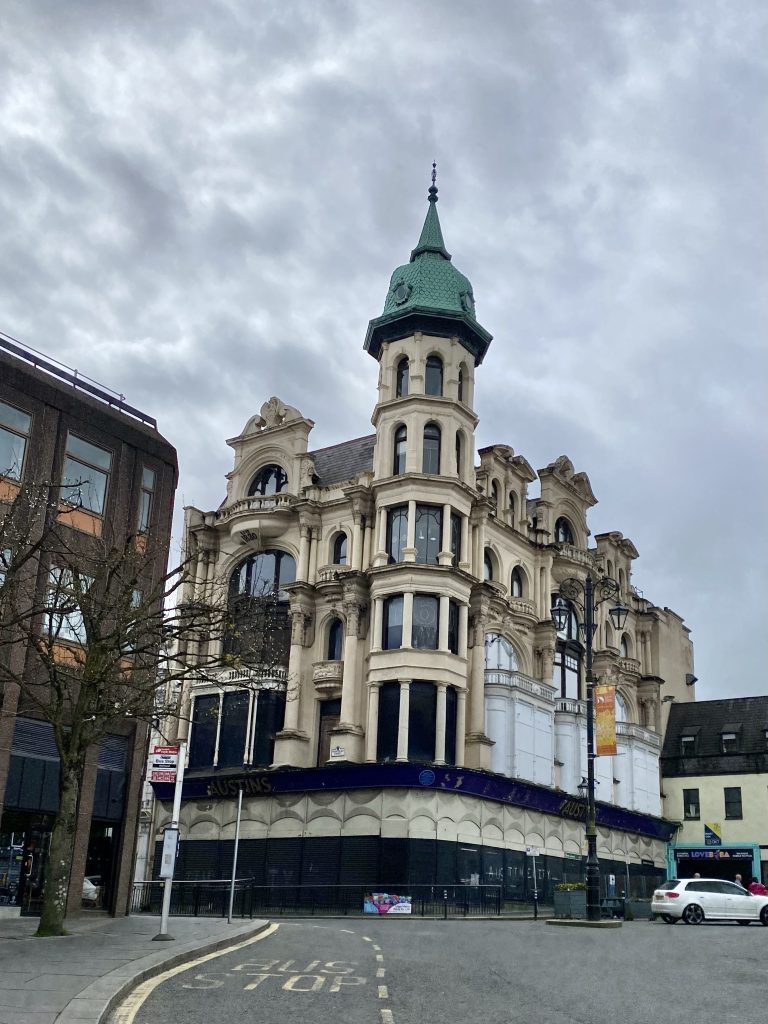
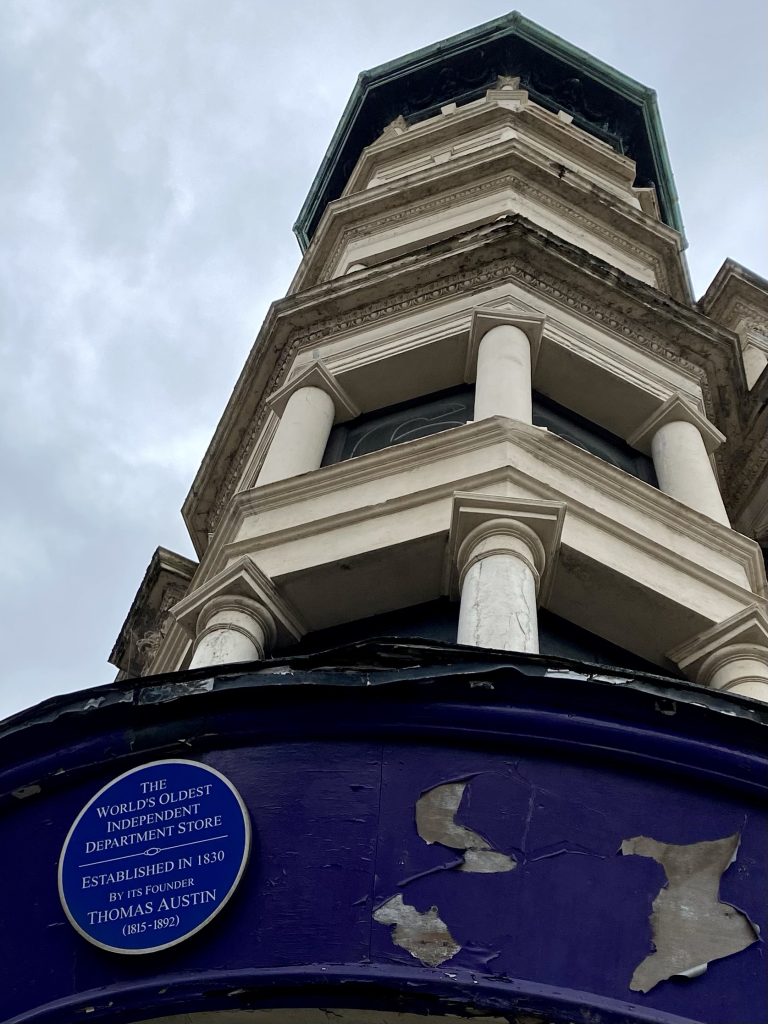
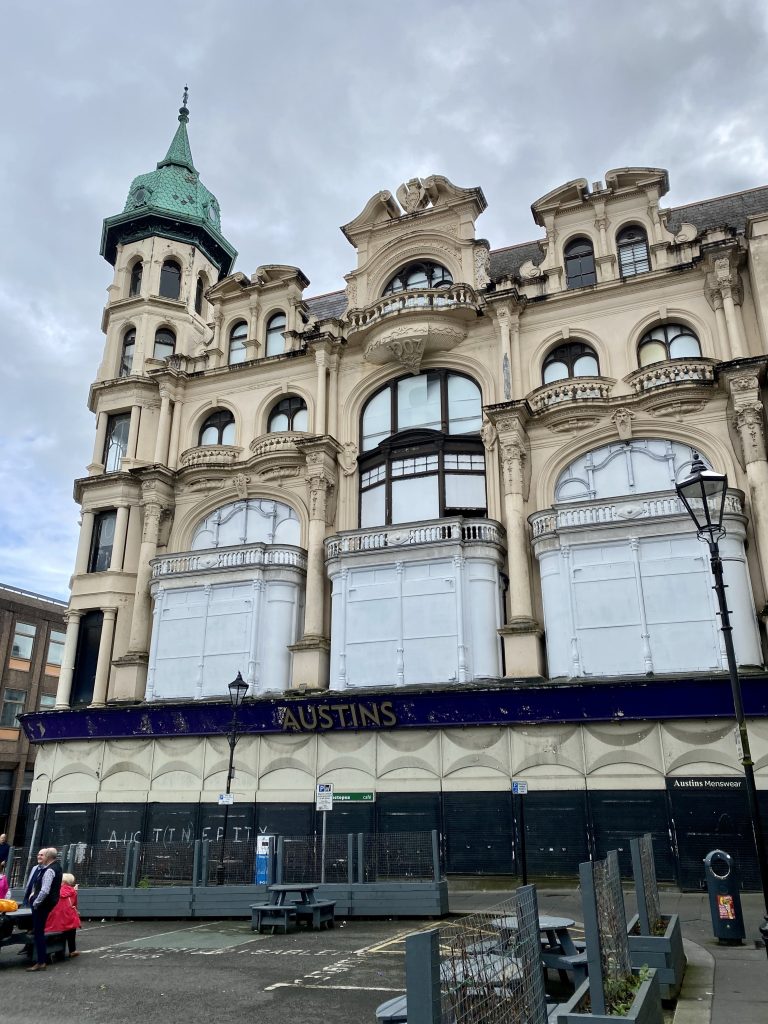
I didn’t have time to explore any of the city outside the walls, other than the small section I saw as I walked to the station, having retrieved my bags.
The Peace Bridge is famous both for its symbolism and as a structure. It winds across the river in a way I’ve never seen anywhere else.
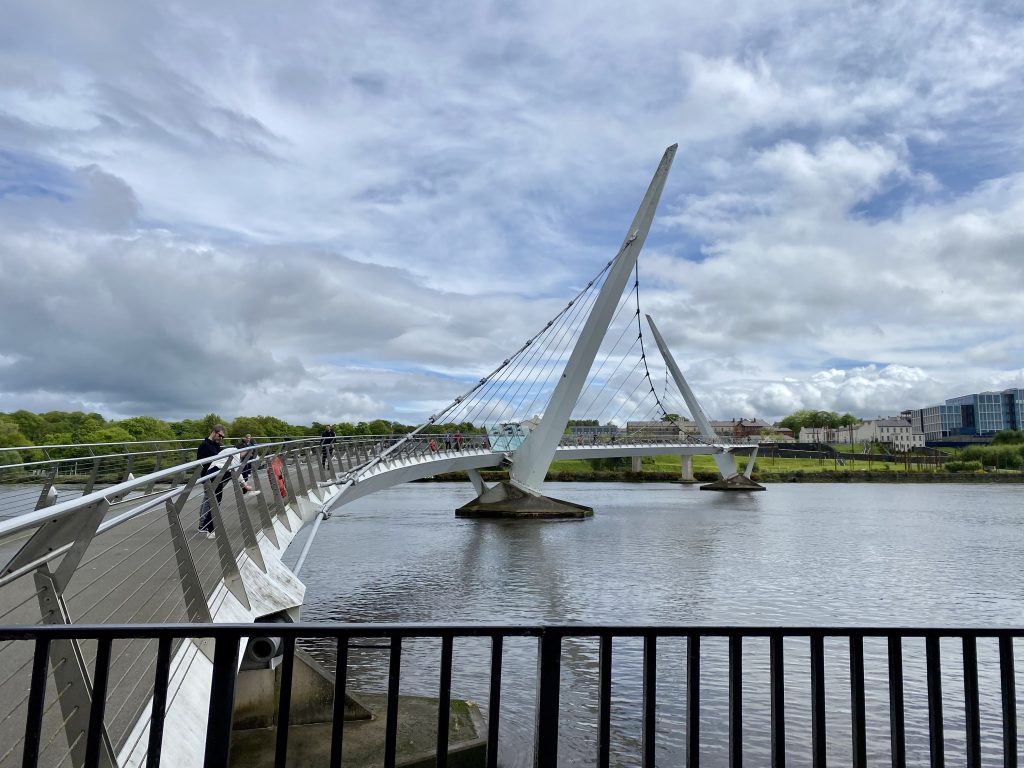
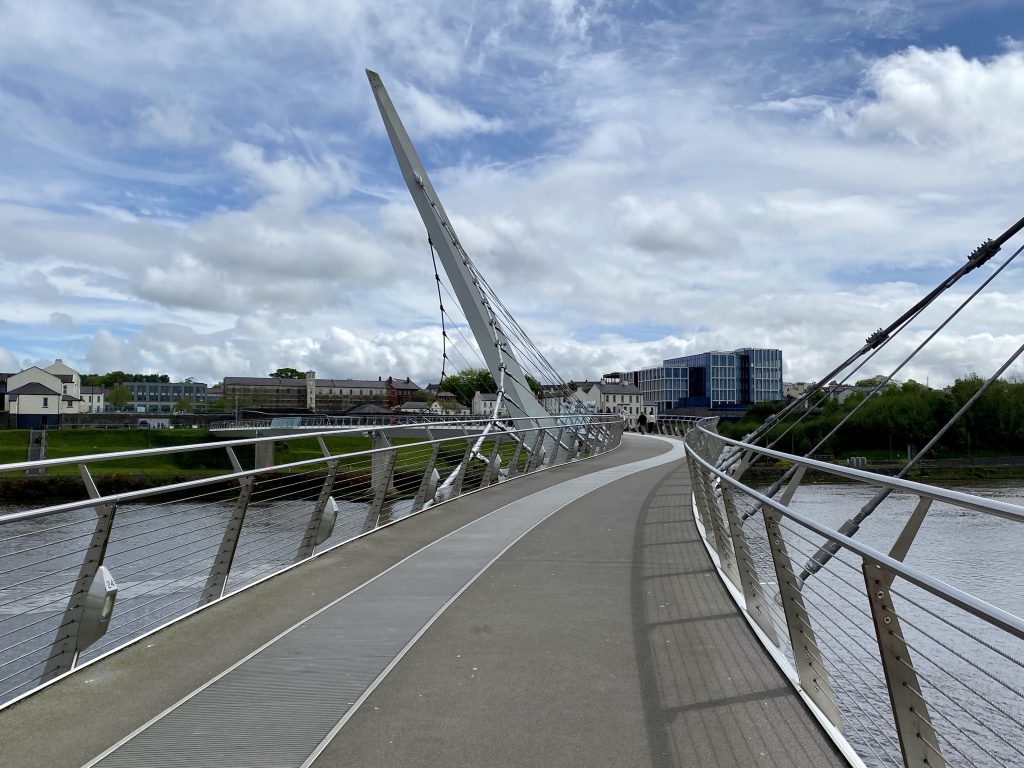
The train back to Belfast was really quiet. I don’t mind that, as it makes it easier to hop from side to side grabbing photos as we go along. The runway of City of Derry airport is immediately adjacent to the railway line. I wonder if they stop trains while planes are landing and taking off. There are good views all the way through the coastal section
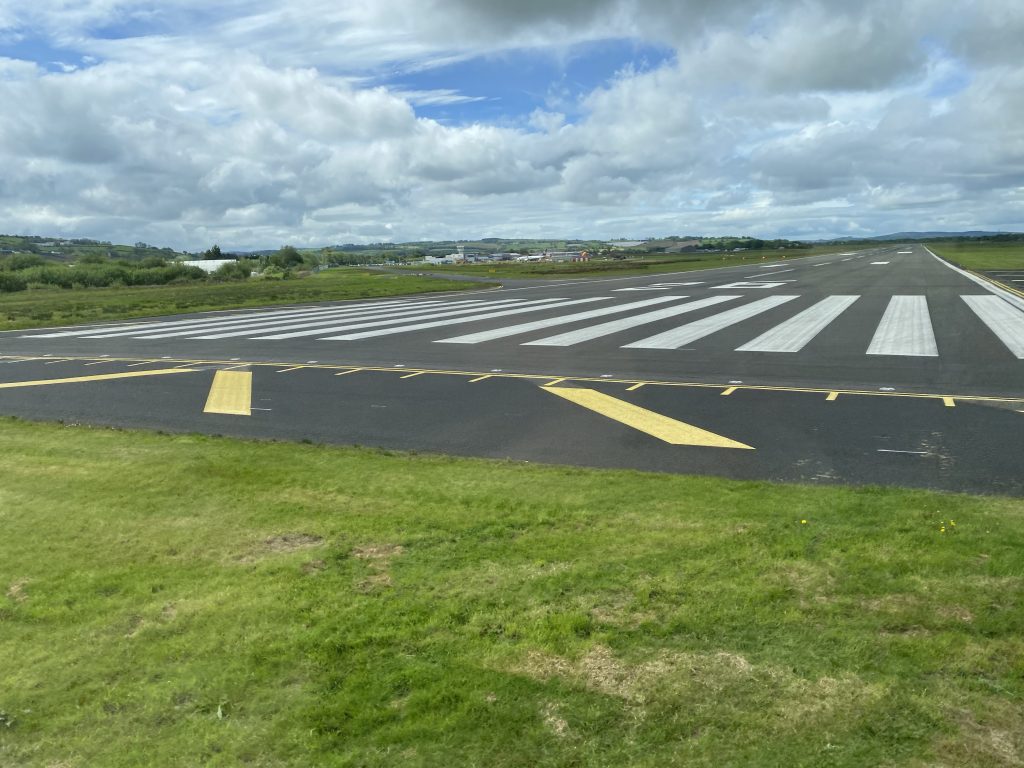
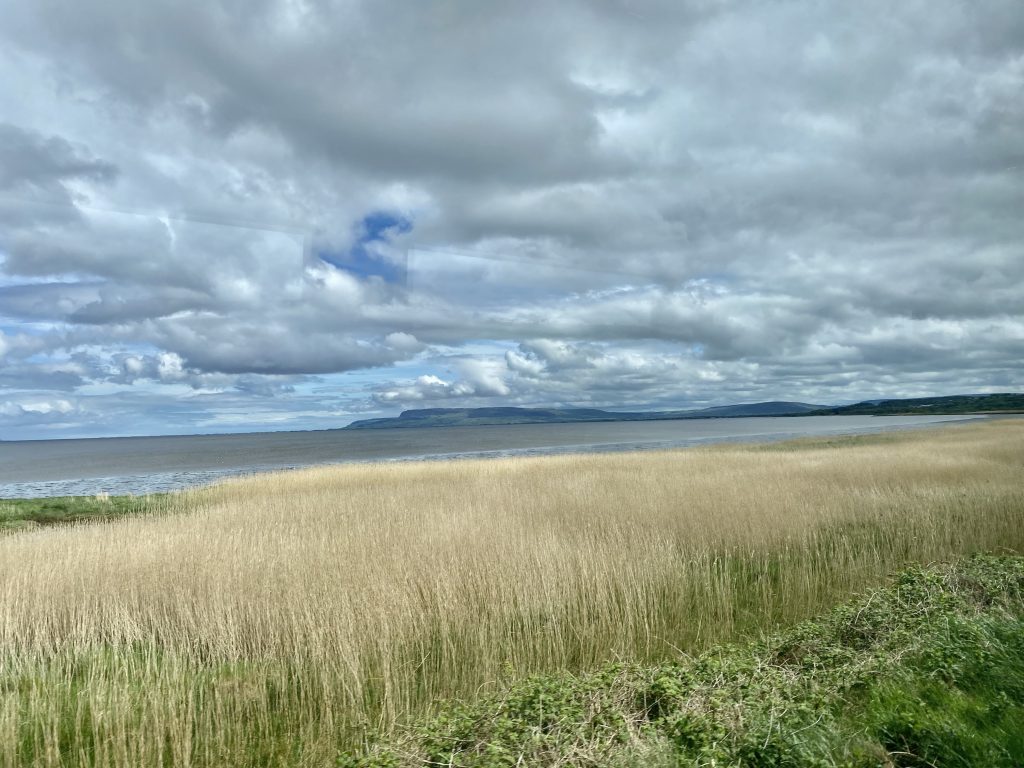
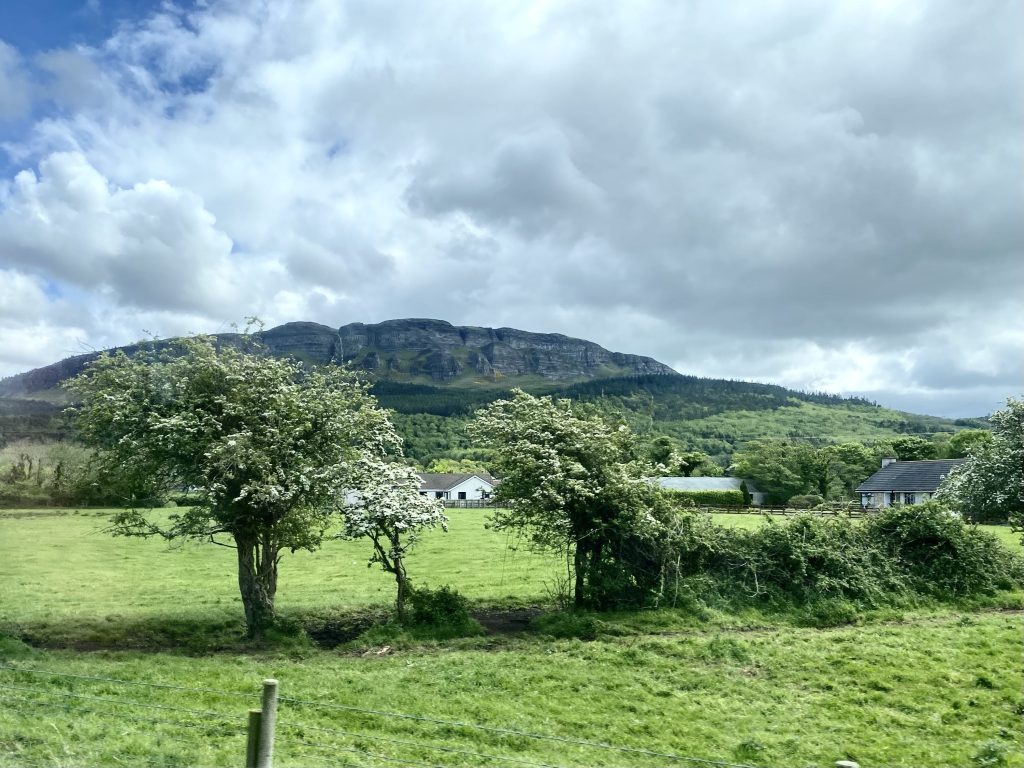
Back in Belfast I had a bit of a pause while waiting for the Enterprise service that connects the capital cities. I had some work to do so this was helpful.
The Enterprise is an express service run jointly by the railway companies on both sides of the border, and is by some distance the most comfortable and luxurious rail service in Ireland. There was an at-table service of food and drinks, and complimentary cold drinks in first class. Much of the line runs along the coast.
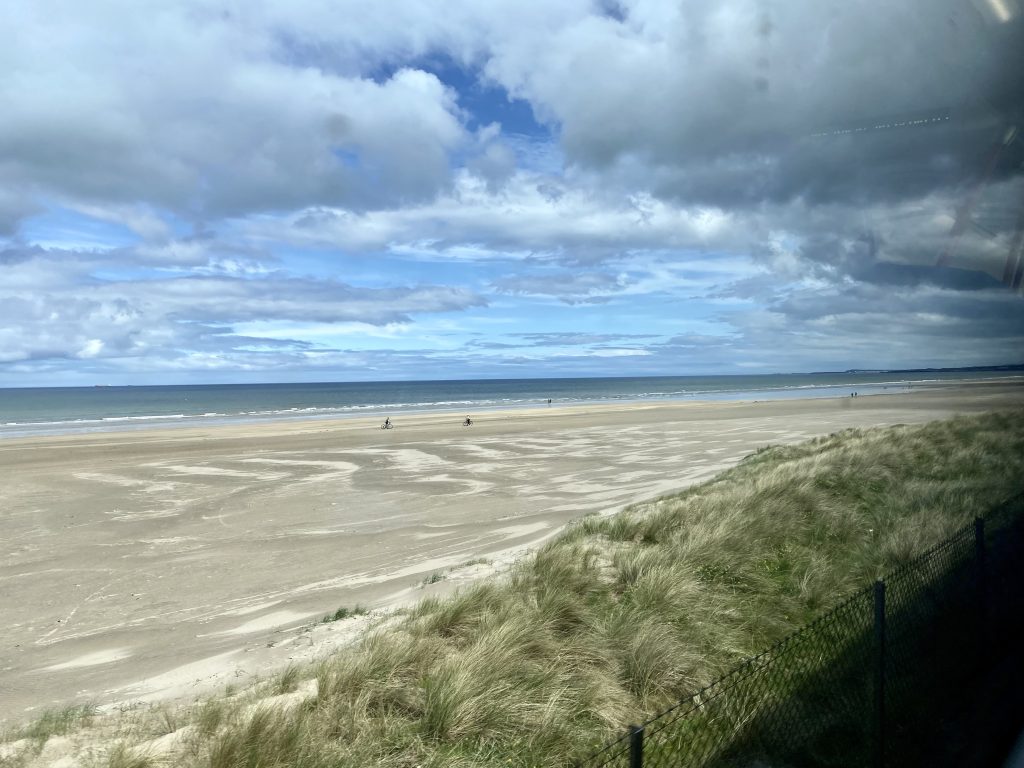
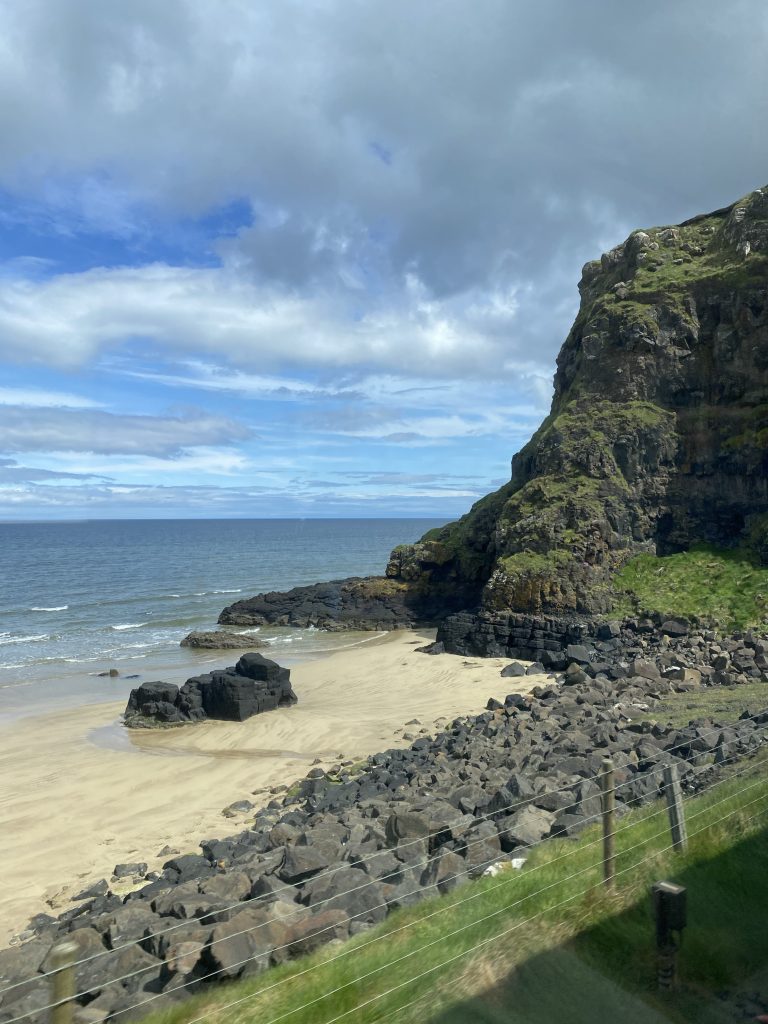
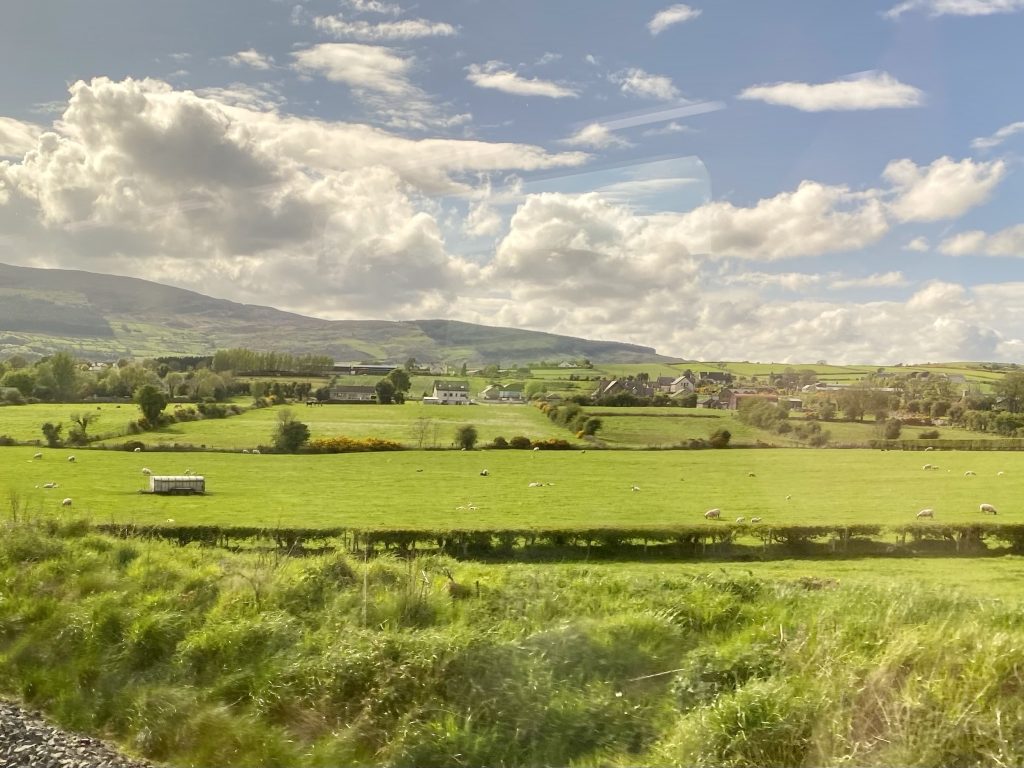
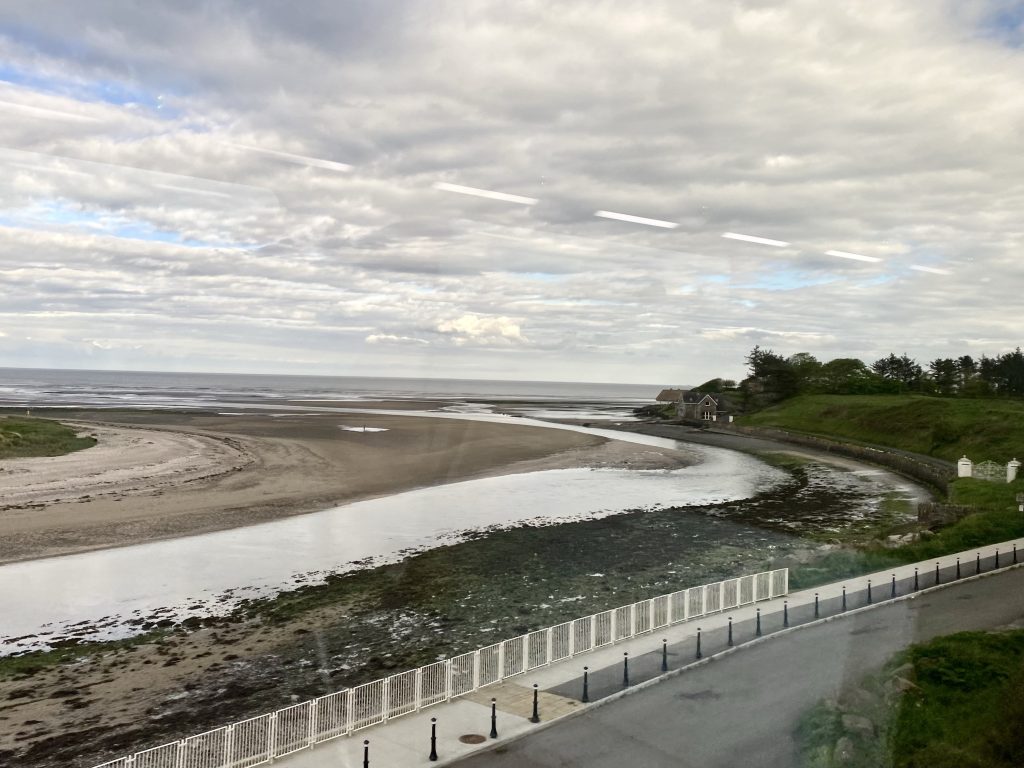
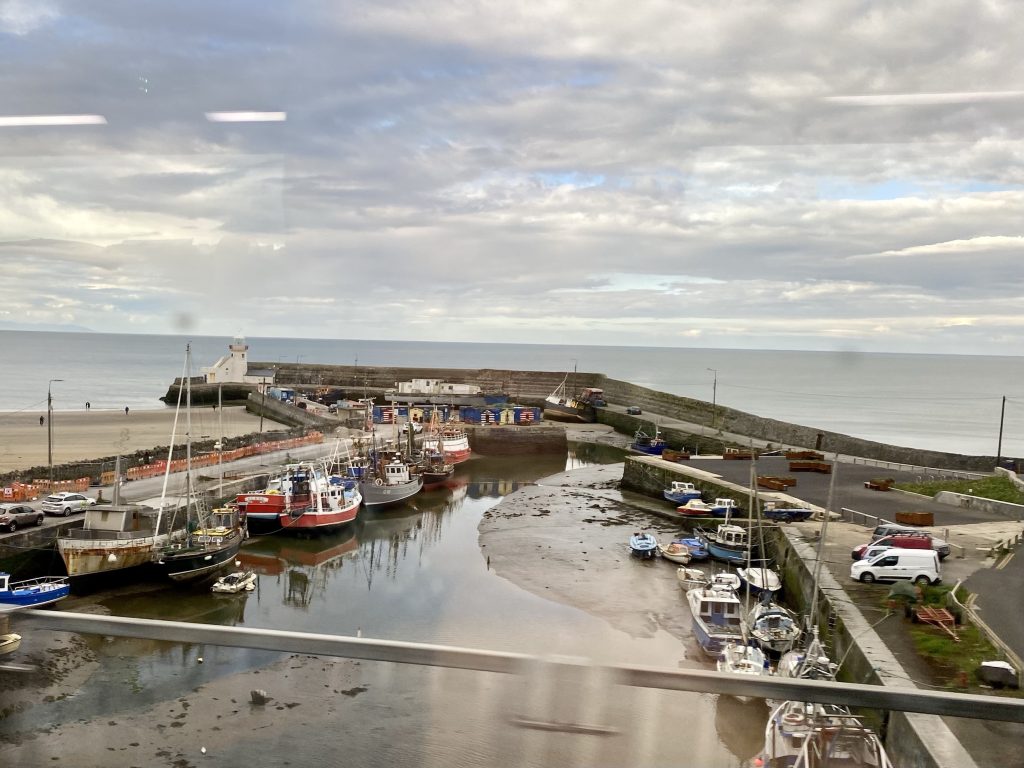
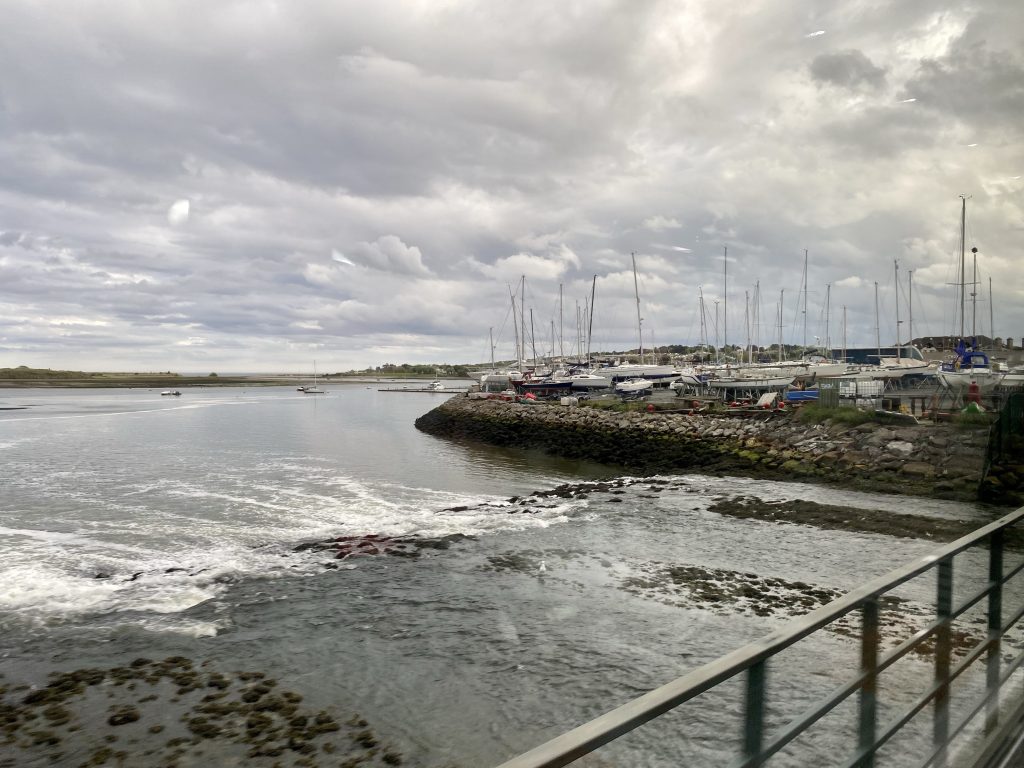
I had an hour between trains in Dublin so took the opportunity to nip across the road for something to eat. I really like Graingers Bar, immediately outside Connolly. The food here is excellent and they serve a very decent Guinness. It’s definitely a drink that tastes better the closer to the factory you can get it; I guess it doesn’t travel well. for many year I disliked Guinness more than pretty much any other drink, but now I rather enjoy it, as long as it is not served too cold.
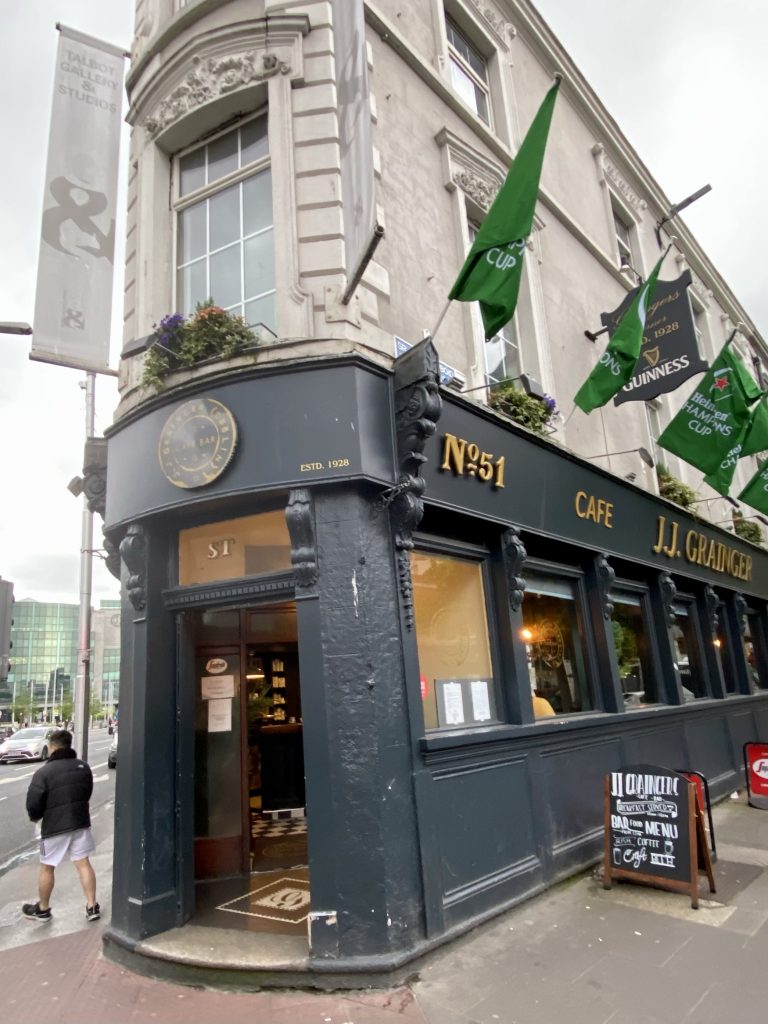
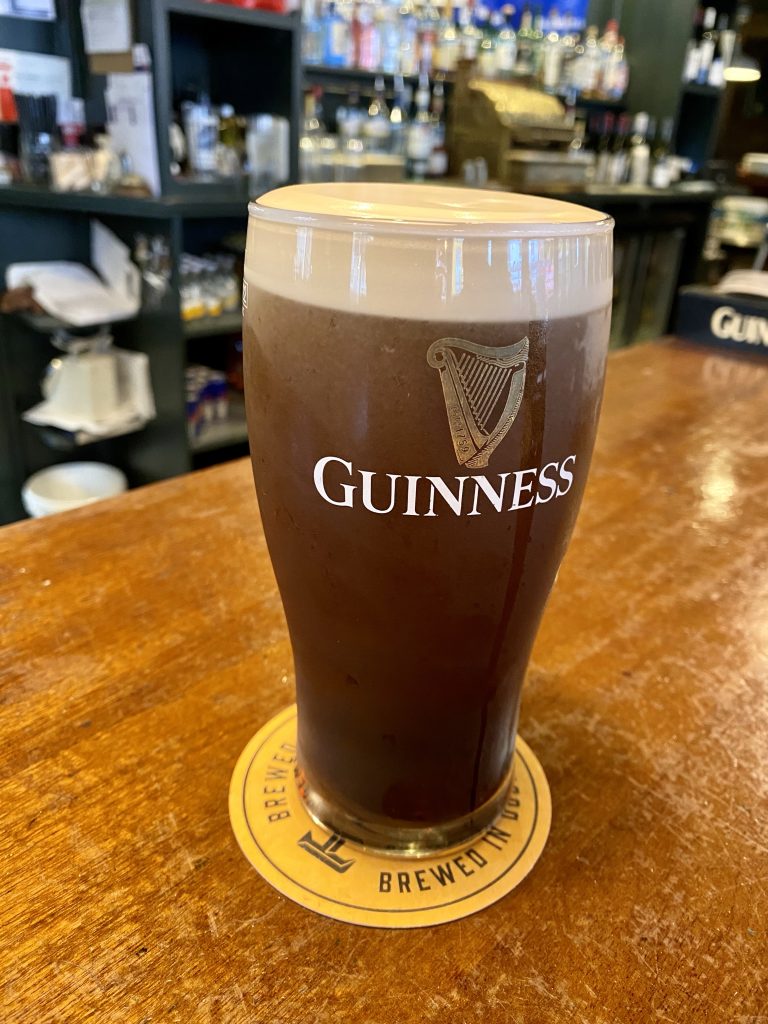
As we left Dublin, the train manager came through the carriage apologising that there would be no automated announcements on the journey and the overhead signs were not working, due to the weather – there was thunder and lightning outside, the first I’ve seen on the whole trip.
Many of the lines in Ireland are single track, with services passing in short double track sections, usually at stations. At Mullingar, our service was held for 10 minutes while a delayed service arrived from the opposite direction. The storm having passed, we were given the chance to stretch our legs and I was amazed to find the remains of another part of the station, which had served a now-closed branch, as well as some lovely buildings which were still in use. Apparently there is also a turntable here, used for the occasional visit by a steam train.
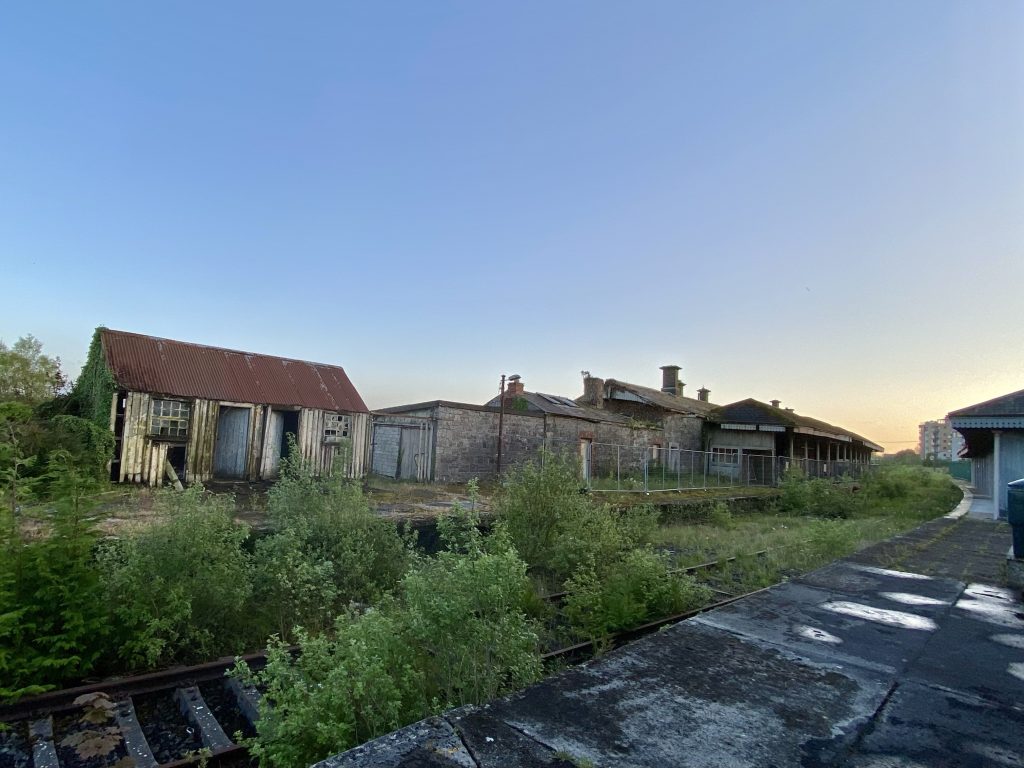
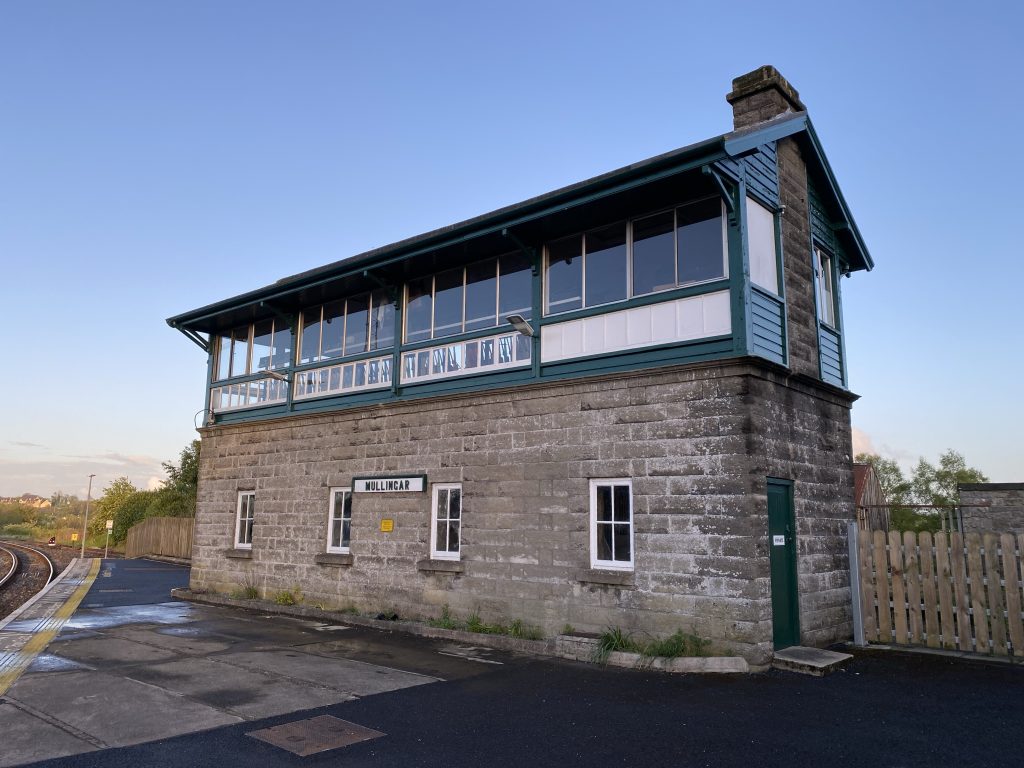
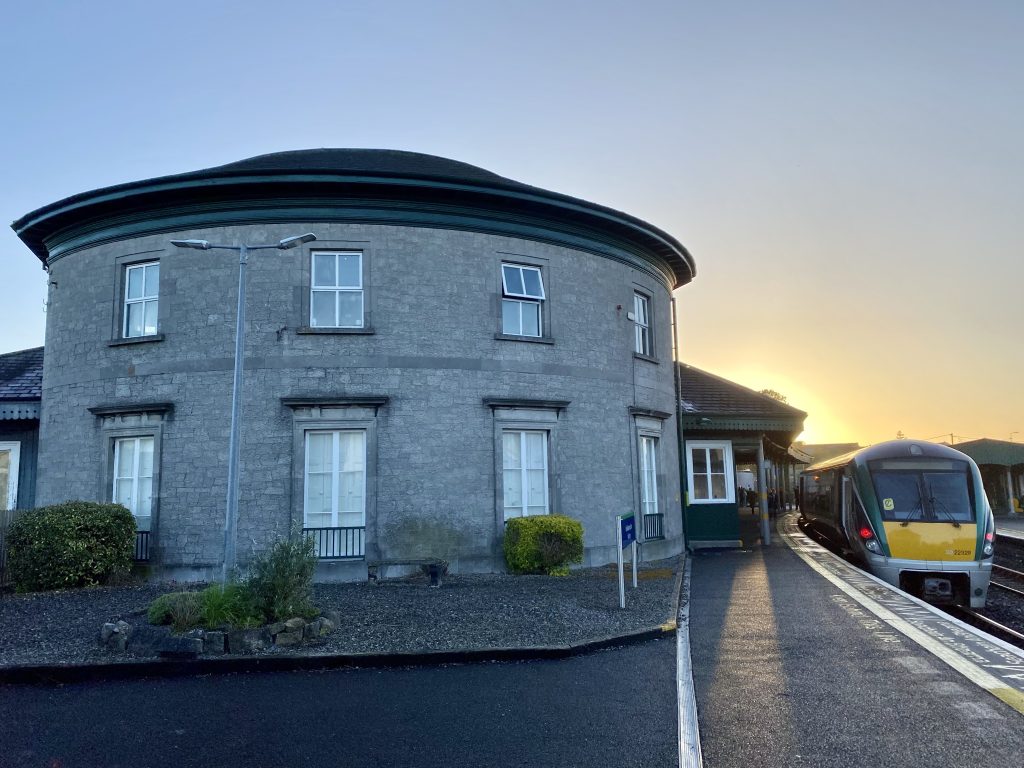
I had a very pleasant walk into Carrick-on-Shannon, passing the moorings as I walked over the Shannon Bridge.
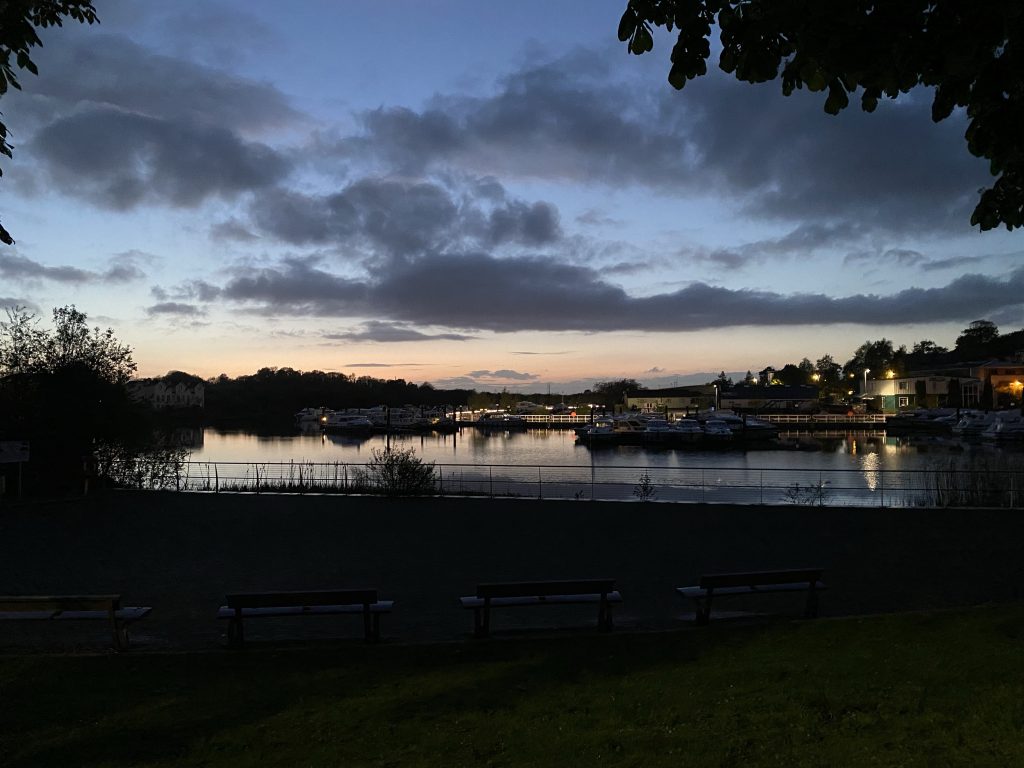
My hotel was interesting. It clearly had a very long history and the walls were covered with mementos of its history. There was even a room with displays.
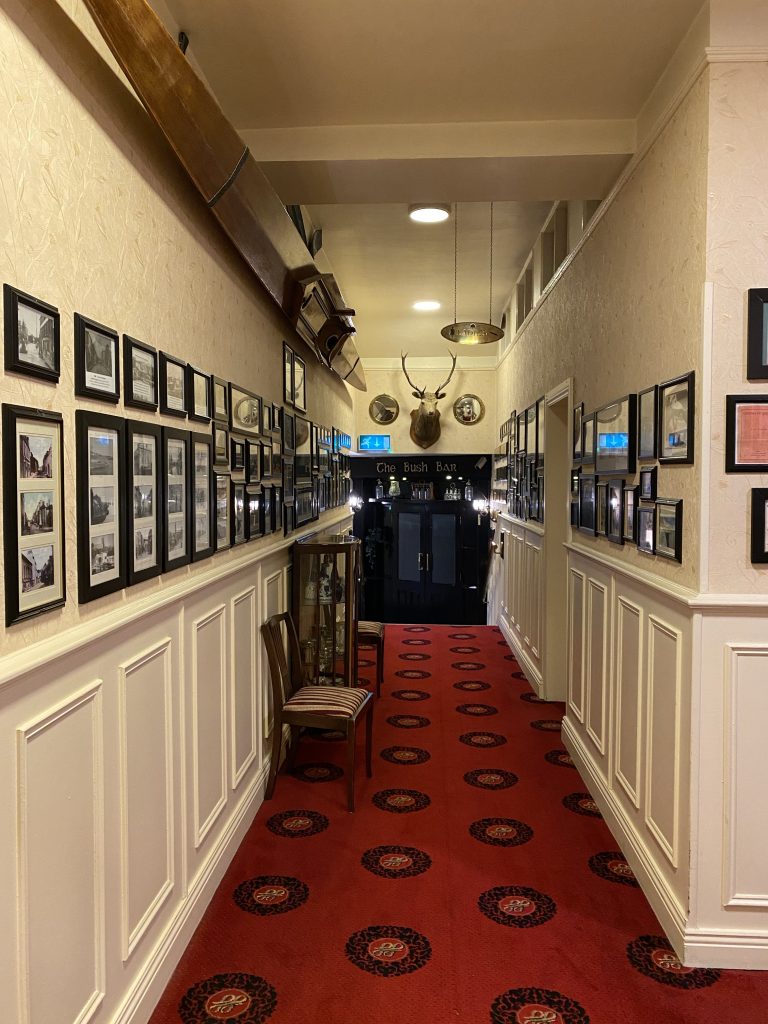
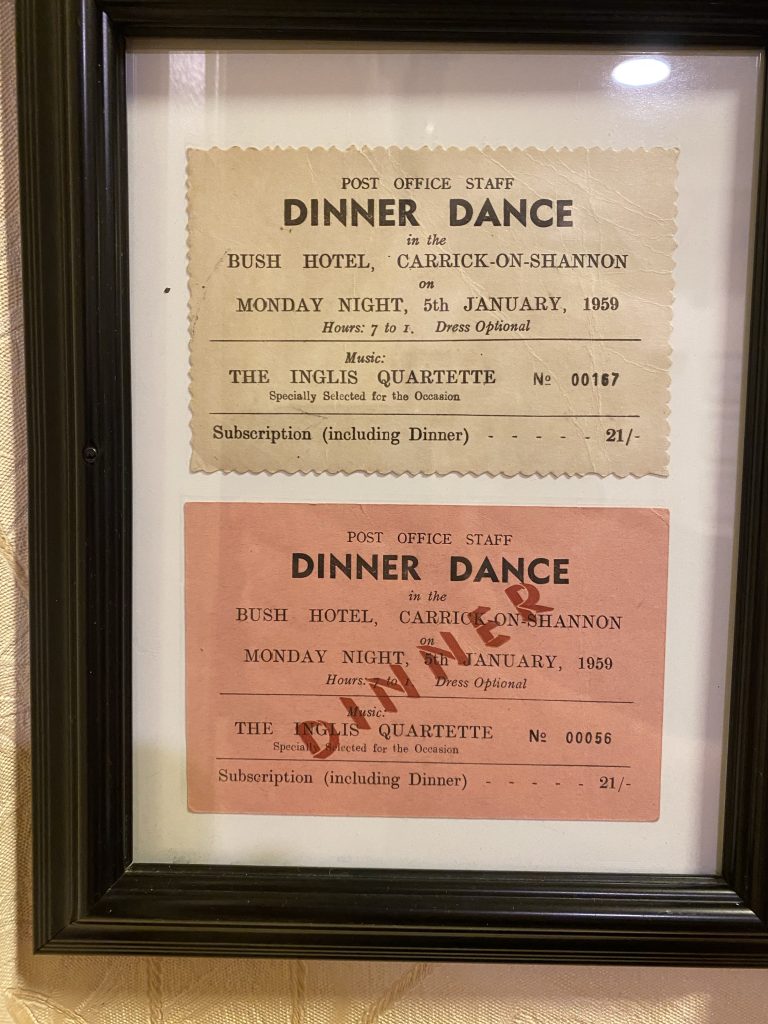
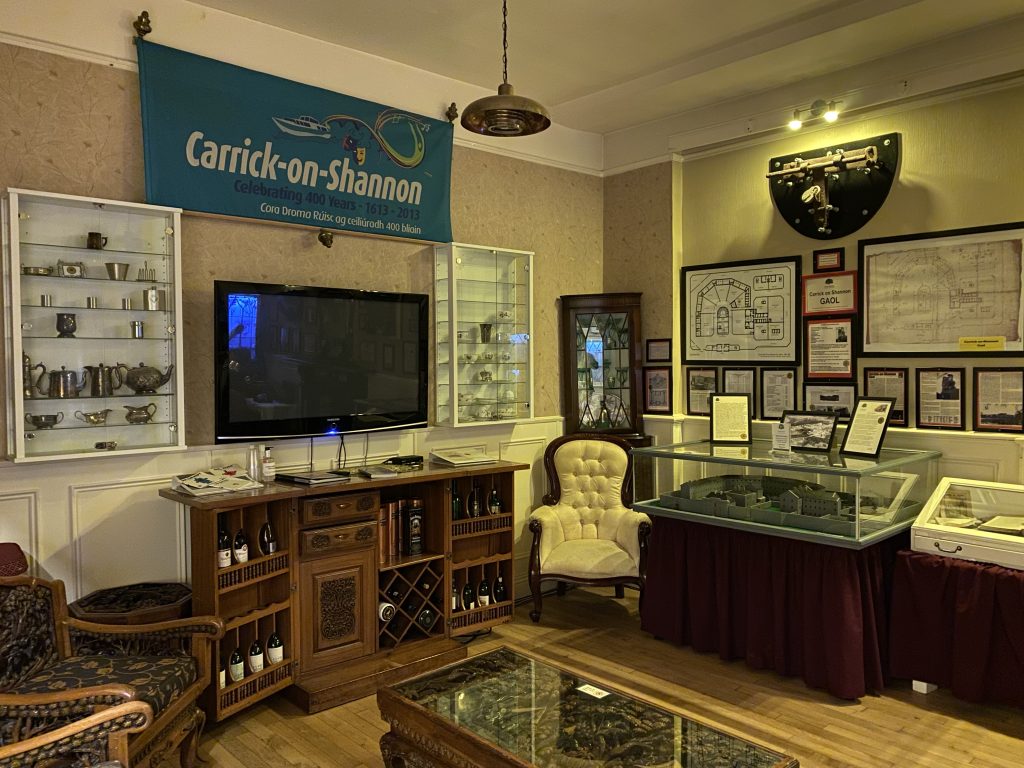
Before turning in I took a walk around the town. It is not large and was very quiet. Quiet that is other than the massively over-amplified sound of a performer in a bar at one end of the town who could be heard from the other end – he was only playing acoustic guitar and singing!
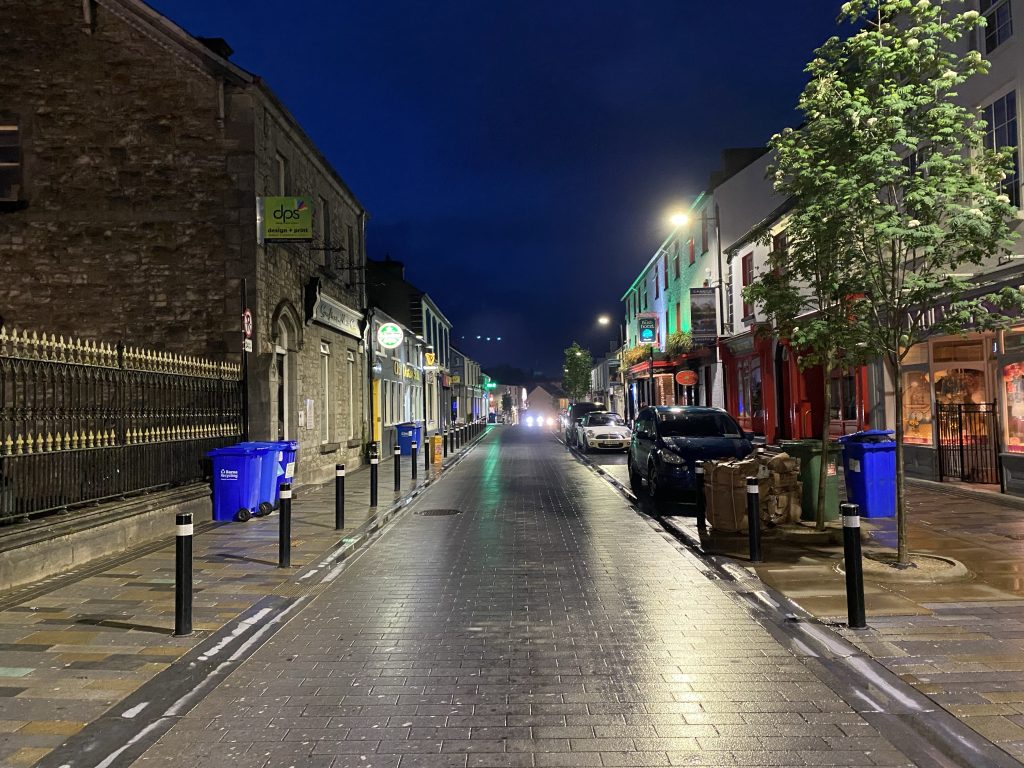
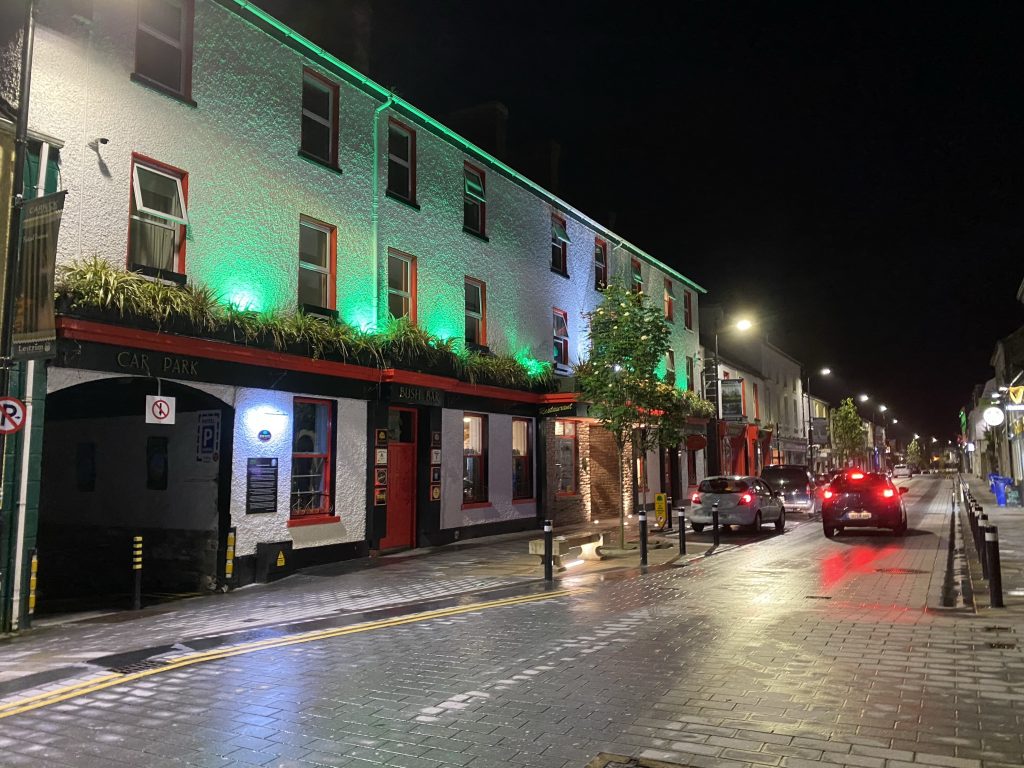
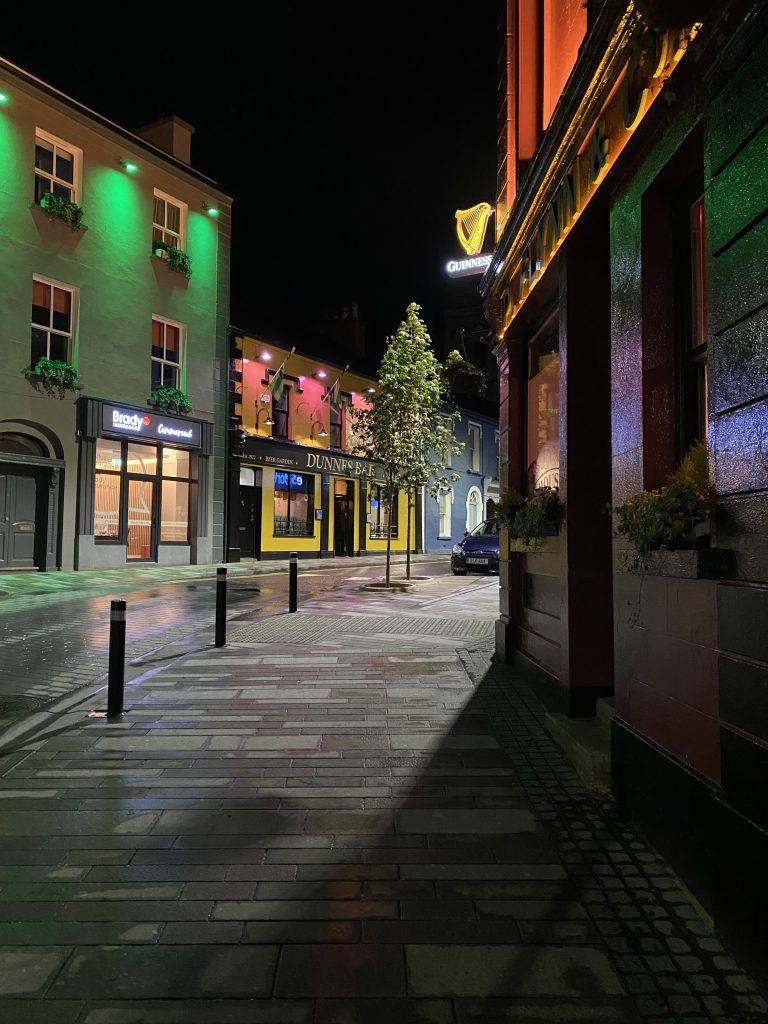
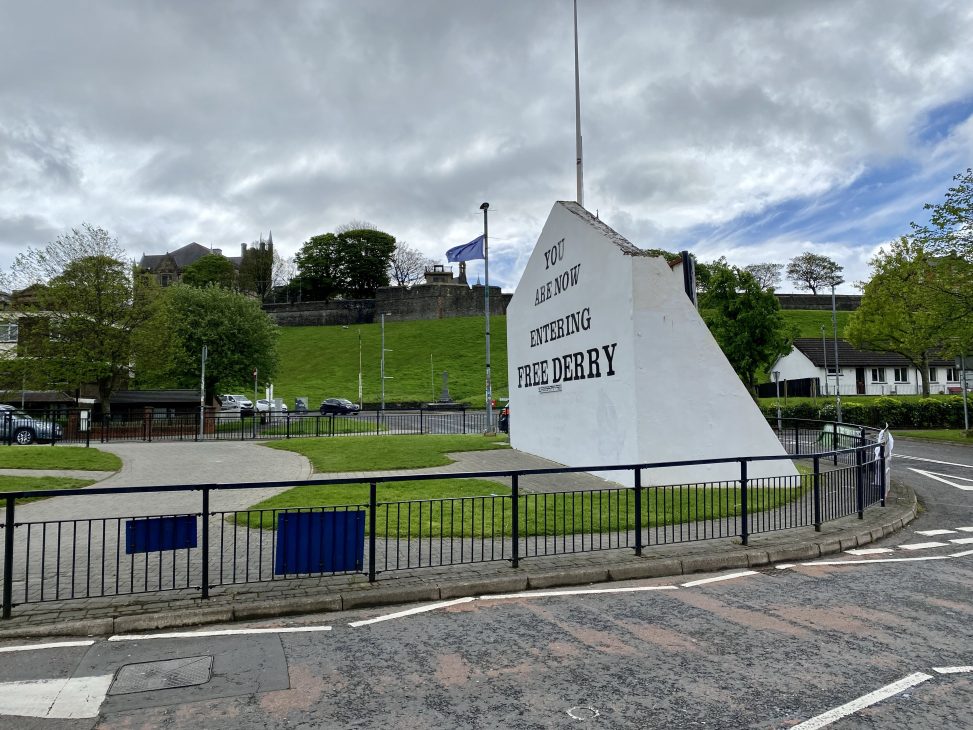
Leave a Reply